T
In today's digital age, having an online presence is crucial for businesses to stay competitive. With millions of websites out there, it's not enough to simply have a website. To stand out and get noticed online, businesses need to ensure their website is optimized for search engines.
Search Engine Optimization (SEO) is the practice of optimizing your website to increase its visibility and rank higher in search engine results pages (SERPs). Effective SEO copywriting is a critical part of this process.
SEO copywriting involves creating content that is optimized for search engines while also being engaging and informative for the reader. Here are some tips for effective SEO copywriting that will help your website get noticed online:
1. Conduct Keyword Research
Keyword research is the foundation of effective SEO copywriting. You need to know what your target audience is searching for and what keywords they are using to find information. Use keyword research tools to find relevant keywords and include them in your content.
2. Use Relevant and Engaging Headlines
Headlines are the first thing that people see when they land on your website. Use headlines that are relevant to the content and engaging enough to grab the reader's attention. Use keywords in your headlines to make them more search engine-friendly.
3. Write Quality Content
Quality content is the backbone of effective SEO copywriting. Write content that is informative, engaging, and adds value to the reader. Use subheadings, bullet points, and images to make your content easier to read and understand.
4. Use Meta Descriptions
Meta descriptions are the brief descriptions that appear in the search engine results pages under the headline. Use relevant keywords and write a concise description that accurately describes the content on your page.
5. Optimize Images
Images are an essential part of any website, but they can also slow down your website if they are not optimized. Use compressed images and add relevant alt tags to make them more search engine-friendly.
6. Build Quality Backlinks
Backlinks are links from other websites that link back to your website. Quality backlinks are an essential part of SEO and can help improve your website's search engine ranking. Build quality backlinks by creating engaging and informative content that other websites will want to link to.
7. Focus on User Experience
User experience is becoming increasingly important in SEO. Google is placing more emphasis on user experience metrics such as page speed, mobile responsiveness, and user engagement. Ensure that your website is optimized for a positive user experience by optimizing page speed, ensuring mobile responsiveness, and creating engaging content that keeps users on your website longer.
8. Use Internal Linking
Internal linking is the practice of linking to other pages within your website. This helps search engines understand the structure of your website and can improve your website's search engine ranking. Use internal linking to help guide users through your website and to help search engines understand the content on your website.
9. Monitor and Analyze Your Performance
Monitoring and analyzing your website's performance is critical to SEO success. Use tools like Google Analytics to track your website's traffic, bounce rate, and other important metrics. Use this information to make adjustments and improvements to your website and content to improve your website's search engine ranking.
10. Stay Up-to-Date with SEO Trends
SEO is constantly evolving, so it's important to stay up-to-date with the latest trends and best practices. Subscribe to SEO blogs and forums, attend SEO conferences, and stay informed on the latest algorithm updates from search engines like Google. By staying up-to-date, you can ensure that your website stays relevant and competitive in the ever-changing world of SEO.
11. Write for Your Audience
While it's important to optimize your content for search engines, it's equally important to write for your audience. Your content should be informative, engaging, and useful for your target audience. By providing valuable content, you can increase user engagement and keep visitors on your website longer.
12. Use Social Media to Promote Your Content
Social media can be a powerful tool for promoting your content and driving traffic to your website. Share your content on social media platforms like Facebook, Twitter, LinkedIn, and Instagram to increase its reach and visibility. Encourage your followers to share your content to help increase its exposure.
13. Use Calls-to-Action (CTAs)Use Calls-to-Action (CTAs)
Calls-to-Action (CTAs) are prompts that encourage users to take a specific action, such as signing up for a newsletter, downloading an ebook, or making a purchase. Use CTAs throughout your website and content to guide users through your website and encourage them to take the next step.
14. Use Local SEO
If your business has a physical location, local SEO is critical to your success. Local SEO involves optimizing your website and content for location-specific keywords and phrases. This can help improve your website's search engine ranking for local search queries and drive more foot traffic to your business.
15. Be Patient
SEO is a long-term strategy, and it takes time to see results. Be patient and continue to create quality content that is optimized for search engines. Over time, your website will begin to rank higher in search engine results pages, and you will begin to see an increase in traffic and engagement.
16. Use Schema Markup
Schema markup is a type of code that you can add to your website to help search engines understand the content on your website. It can help improve your website's search engine ranking and increase visibility in search engine results pages. Use schema markup to provide additional information about your content, such as reviews, ratings, and product information.
17. Optimize Your Images
Images can help make your content more engaging and appealing to your audience, but they can also slow down your website's loading speed if they are not optimized properly. Use image compression tools to reduce file size and ensure that your images are properly formatted for the web. Add alt text to your images to help search engines understand the content of your images.
18. Use Long-Tail Keywords
Long-tail keywords are longer and more specific keyword phrases that users use when searching for specific products or services. By using long-tail keywords in your content, you can increase your chances of ranking for specific search queries and improve your website's search engine ranking.
19. Build Quality Backlinks
Backlinks are links from other websites to your website. They can help improve your website's search engine ranking and increase visibility in search engine results pages. Focus on building quality backlinks from authoritative websites in your industry. Avoid spammy or low-quality backlinks, as these can harm your website's search engine ranking.
20. Continuously Improve Your Content
Finally, to be successful in SEO, it's important to continuously improve your content. Use tools like Google Search Console to monitor your website's search engine ranking and identify opportunities for improvement. Update and optimize your existing content to keep it relevant and engaging for your audience. Create new content that is optimized for search engines and provides value to your audience.
21. Hire a Professional SEO Copywriter
If you're struggling to create effective SEO content, consider hiring a professional SEO copywriter. A professional SEO copywriter can help you create high-quality, optimized content that is designed to improve your website's search engine ranking and engage your target audience
By following these tips, you can create an effective SEO copywriting strategy that helps your website get noticed online. Remember to focus on user experience, write for your audience, use social media to promote your content, and continuously improve your content to stay competitive in the ever-changing world of SEO.
In today's fast-paced world, it can be easy to eat on the go, mindlessly scarfing down food without really tasting it. But this type of eating can lead to weight gain, health problems, and even emotional distress.
Mindful eating is a practice that can help you slow down, savor your food, and connect with your body. It can help you make healthier choices about what you eat, and it can improve your overall well-being.
In this blog post, we will discuss the benefits of mindful eating and provide tips for incorporating it into your daily life.
What is mindful eating?
Mindful eating is a type of meditation that focuses on the present moment and the experience of eating. When you eat mindfully, you pay attention to the sights, sounds, smells, tastes, and textures of your food. You also pay attention to your body's signals of hunger and fullness.
Mindful eating is not about judging your food or yourself. It is about simply observing and accepting your experience.

Benefits of mindful eating
There are many benefits to mindful eating. Some of these benefits include:
- Weight loss: Mindful eating can help you lose weight or maintain a healthy weight. When you eat mindfully, you are more likely to eat slowly, savor your food, and stop when you are full.
- Improved health: Mindful eating can improve your overall health. It can help to reduce your risk of heart disease, stroke, type 2 diabetes, and some types of cancer.
- Reduced stress: Mindful eating can help to reduce stress. When you eat mindfully, you are more likely to focus on the present moment and let go of worries about the past or future.
- Improved mood: Mindful eating can help to improve your mood. When you eat mindfully, you are more likely to feel satisfied and content.
- Increased self-awareness: Mindful eating can help you increase your self-awareness. When you pay attention to your thoughts and feelings around food, you can learn more about yourself and why you eat the way you do.
Tips for mindful eating
Here are some tips for incorporating mindful eating into your daily life:
- Eat slowly: One of the most important aspects of mindful eating is eating slowly. When you eat slowly, you give your body time to register that it is full.
- Savor your food: Take the time to savor each bite of your food. Pay attention to the taste, smell, texture, and appearance of your food.
- Be present: When you eat, focus on the present moment and the experience of eating. Don't worry about the past or the future.
- Be mindful of your thoughts and emotions: Pay attention to your thoughts and emotions around food. Notice if you are eating for emotional reasons, such as stress or boredom.
- Be kind to yourself: If you make a mistake, don't beat yourself up. Just start again the next meal.
Mindful eating is a skill that takes practice. The more you practice, the better you will become at it. With time and effort, you can learn to eat mindfully and enjoy the many benefits that it has to offer.
Conclusion
Mindful eating is a powerful tool that can help you improve your relationship with food and your overall well-being. If you are struggling with your weight, your health, or your mood, mindful eating may be a helpful addition to your overall wellness plan.

Carol Danvers, Monica Rambeau, and Kamala Khan are each back in the first caravan for The sensations.Captain Marvel's gem appearance in the final occasion ofMs. Marvel caught numerous suckers off guard and sparked excitement for her return to the big screen. As the MCU's most important pinch megahit, Carol Danvers has only ever come to Earth when chaos reigns or by accident. Her whereabouts have been a riddle, leaving suckers wondering what she's been over to in the hugeness of space. Fortunately, the forthcoming movie The sensations, directed by Nia DaCosta, promises to exfoliate some light on Carol's conditioning.
While Carol's position remains unknown, the new caravan hints at the trap of her powers with those of Kamala Khan and Monica Rambeau. This results in a youthful teenager being suitable to change places with the other two whenever she utilizes her powers. Though Monica and Carol have been busy fighting aliens and honing their own capacities, they don't feel thrilled about this new super circuit. still, the caravan hints at the triad forming a important platoon, and conceivably creating one of the most inventive" place- switching" fight scenes in the MCU when The sensations hits theaters on November 10th. suckers can not stay to see what surprises this cosmic adventure has in store.

Mutton is a type of meat that has been enjoyed by people all over the world for centuries. It is a rich and flavorful meat that can be prepared in a variety of ways. One such preparation is the succulent spiced mutton that melts in the mouth. This dish is a delicious and savory way to enjoy mutton that is sure to leave your taste buds satisfied.
What is Mutton?
Mutton is a type of meat that comes from mature sheep that are typically over one year old. This meat has a distinct and rich flavor that sets it apart from other meats. Mutton is often used in traditional dishes and is a staple in many cuisines around the world.

Ingredients for Succulent Spiced Mutton
To make succulent spiced mutton, you will need the following ingredients:
- 2 pounds of mutton, cut into bite-size pieces
- 1 cup of plain yogurt
- 1 tablespoon of garlic paste
- 1 tablespoon of ginger paste
- 1 teaspoon of ground cumin
- 1 teaspoon of ground coriander
- 1 teaspoon of ground turmeric
- 1 teaspoon of ground paprika
- 1 teaspoon of salt
- 1/2 teaspoon of black pepper
- 3 tablespoons of oil
- 1 large onion, chopped
- 2 tomatoes, chopped
- 2 green chilies, chopped
- 1/4 cup of fresh cilantro, chopped
- 1/4 cup of fresh mint, chopped

Preparing the Spiced Mutton
Now that you have all the ingredients, it's time to start preparing the succulent spiced mutton that melts in the mouth.
-
In a large bowl, mix the yogurt, garlic paste, ginger paste, cumin, coriander, turmeric, paprika, salt, and black pepper.
-
Add the mutton pieces to the yogurt mixture and mix well to coat the meat. Marinate the mutton for at least 2 hours in the refrigerator.
-
In a large skillet, heat the oil over medium-high heat. Add the chopped onions and cook until they are translucent.
-
Add the marinated mutton to the skillet and cook for 10-12 minutes until the meat is browned on all sides.
-
Add the chopped tomatoes and green chilies to the skillet and cook for another 5 minutes until the tomatoes are soft.
-
Cover the skillet and let the mutton cook for an additional 10-15 minutes until the meat is tender.
-
Once the meat is tender, remove the skillet from the heat and garnish with fresh cilantro and mint.
Serving Succulent Spiced Mutton
Succulent spiced mutton can be served with a variety of side dishes such as rice, naan bread, or roasted vegetables. It's a hearty and satisfying dish that is sure to please any meat lover.
Health Benefits of Mutton
Mutton is a great source of protein, iron, and other important vitamins and minerals. It is also lower in fat than other meats such as beef or pork. However, it's important to consume mutton in moderation as it is high in cholesterol.
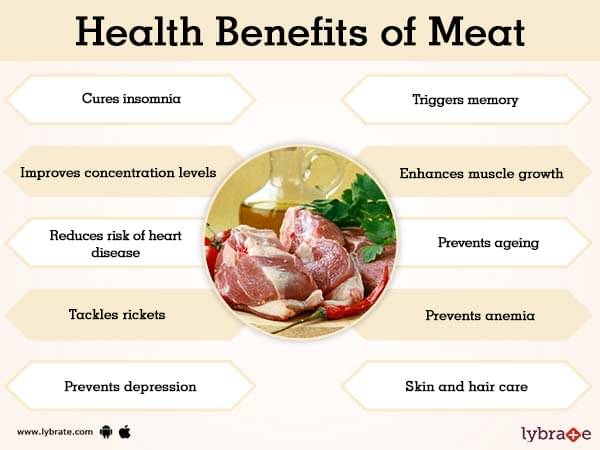
Conclusion
Succulent spiced mutton that melts in the mouth is a delicious and savory way to enjoy mutton. It's a flavorful and satisfying dish that is perfect for any occasion. With the right combination of spices and cooking techniques, you can create a succulent and tender dish that your family and friends will love. So why not give this recipe a try and indulge in the delicious flavors of succulent spiced mutton today!

In today's fast-paced world, stress and anxiety have become a common part of life, especially for busy professionals. The constant pressure to meet deadlines, achieve targets, and maintain a work-life balance can take a toll on your mental and physical health. However, there is a simple solution that can help you manage stress and anxiety effectively- Meditation.
Meditation is an ancient practice that has been around for centuries, and it is scientifically proven to have a positive impact on mental and physical health. In this blog, we will discuss five surprising health benefits of meditation for busy professionals.
1. Reduces Stress and Anxiety:
Stress and anxiety can lead to various health problems, including depression, insomnia, and high blood pressure. Meditation has been proven to reduce the levels of cortisol, the stress hormone, in the body. It helps in calming the mind and reducing anxiety, leading to a sense of relaxation and peace.
2. Improves Focus and Concentration:
In today's digital age, distractions are everywhere, making it challenging to focus on important tasks. Meditation helps in improving focus and concentration by training the mind to stay in the present moment. It helps in increasing cognitive function, memory retention, and creativity.
3. Boosts Immune System:
A strong immune system is essential for overall health and wellbeing. Meditation has been found to boost the immune system by increasing the production of antibodies and improving the body's ability to fight off infections and diseases. It also helps in reducing inflammation, which can lead to various chronic illnesses.
4. Lowers Blood Pressure:
High blood pressure is a common health problem among busy professionals due to stress and anxiety. Meditation has been found to lower blood pressure by reducing stress levels and promoting relaxation. It helps in improving cardiovascular health and reducing the risk of heart diseases.
5. Enhances Emotional Wellbeing:
Emotional wellbeing is essential for a fulfilling and happy life. Meditation helps in enhancing emotional wellbeing by reducing negative emotions, such as anxiety, depression, and anger, and promoting positive emotions, such as happiness, contentment, and gratitude. It helps in improving self-awareness, self-esteem, and overall emotional intelligence.
In conclusion, meditation is a powerful tool that can help busy professionals manage stress and anxiety effectively, improve focus and concentration, boost the immune system, lower blood pressure, and enhance emotional wellbeing. It is a simple practice that can be done anywhere, anytime, and does not require any special equipment or training. So, take a few minutes out of your busy schedule every day to meditate, and experience the amazing health benefits it offers.

In today's fast-paced world, it can be difficult to stay on top of everything. There are endless demands on our time, and it can be easy to feel overwhelmed. But there are things you can do to improve your productivity and get more done.

Here are 20 tips to help you be more productive:
- Set goals. What do you want to achieve? Once you know what you want to achieve, you can start to break it down into smaller, more manageable tasks.
- Prioritize your tasks. Not all tasks are created equal. Some tasks are more important than others. Prioritize your tasks so that you focus on the most important ones first.
- Break down large tasks. If a task seems too daunting, break it down into smaller, more manageable tasks. This will make it seem less overwhelming and more achievable.
- Set deadlines. Deadlines can help you stay on track and avoid procrastination. When you have a deadline, you're more likely to focus on the task and get it done.
- Eliminate distractions. When you're trying to be productive, it's important to eliminate distractions. This means turning off your phone, closing your email, and finding a quiet place to work.
- Take breaks. It's important to take breaks throughout the day, even if it's just for a few minutes. Getting up and moving around will help you stay refreshed and focused.
- Delegate tasks. If you have too much on your plate, don't be afraid to delegate tasks to others. This will free up your time so that you can focus on the most important things.
- Use time management tools. There are a number of time management tools available that can help you be more productive. These tools can help you track your time, set goals, and prioritize your tasks.
- Plan your day. Take a few minutes each day to plan your day. This will help you stay on track and avoid wasting time.
- Be organized. Having a system for organizing your work will help you be more productive. This could mean using a to-do list, a calendar, or a project management tool.
- Take care of yourself. When you're well-rested, well-fed, and healthy, you're more likely to be productive. Make sure you're getting enough sleep, eating healthy foods, and exercising regularly.
- Say no. It's okay to say no to requests that will take up too much of your time or that aren't a priority for you. Learning to say no will help you protect your time and focus on the things that are most important to you.
- Avoid multitasking. Multitasking is often counterproductive. When you try to do too many things at once, you're not able to focus on any of them effectively.
- Take care of your mental health. If you're feeling stressed or overwhelmed, it's important to take care of your mental health. This could mean talking to a therapist, practicing relaxation techniques, or getting enough sleep.
- Find a productivity system that works for you. There is no one-size-fits-all productivity system. Experiment with different systems until you find one that helps you be more productive.
- Be patient. It takes time to develop new habits and become more productive. Don't get discouraged if you don't see results immediately. Just keep at it, and you'll eventually see a difference.
- Celebrate your successes. When you achieve a goal, take some time to celebrate your success. This will help you stay motivated and keep working towards your goals.
- Ask for help. If you're struggling to be more productive, don't be afraid to ask for help. There are a number of resources available to help you, including books, websites, and coaches.
- Be flexible. Things don't always go according to plan. Be prepared to adjust your plans as needed.
- Don't give up. It's easy to get discouraged when you're not seeing results immediately. But don't give up. Just keep at it, and you'll eventually see a difference.
How to Find a Productivity System That Works for You
There are many different productivity systems out there, so it can be tough to know where to start. Here are a few tips for finding a productivity system that works for you:
- Consider your personality type. Some productivity systems are better suited for certain personality types than others. For example, if you're a highly organized person, you might prefer a system that uses a lot of to-do lists and calendars. If you're more of a creative type, you might prefer a system that's more flexible and allows you to work in bursts of inspiration.
- Think about your goals. What do you want to achieve with your productivity system? Do you want to get more done in less time? Do you want to improve your focus and concentration? Once you know what you want to achieve, you can start to look for a system that will help you reach your goals.
- Experiment with different systems. There's no need to commit to one productivity system right away. Try out a few different systems and see what works best for you. You might find that you need to combine elements from different systems to create a system that's perfect for you.
- Be patient. It takes time to develop new habits and become more productive. Don't get discouraged if you don't see results immediately. Just keep at it, and you'll eventually see a difference.
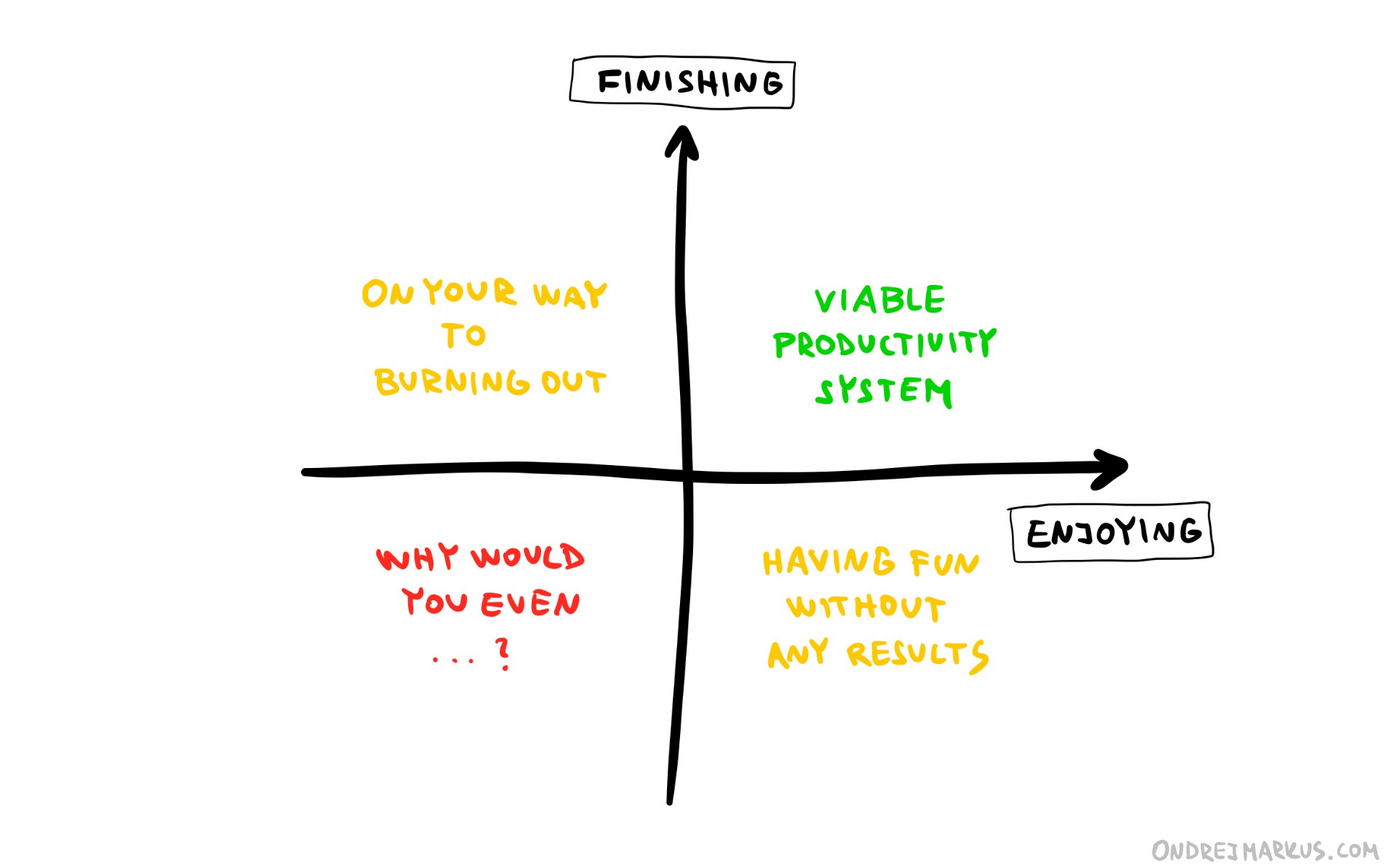
Here are some popular productivity systems that you can try:
- The Eisenhower Matrix: This system helps you prioritize your tasks by their importance and urgency.
- The Getting Things Done (GTD) System: This system helps you capture, organize, and process your tasks so that you can focus on the most important things.
- The Promotor Technique: This system helps you break down large tasks into smaller, more manageable chunks and work on them in focused intervals.
- The Bullet Journal Method: This system helps you track your tasks, goals, and ideas in a simple and effective way.
No matter which productivity system you choose, the most important thing is to find one that you can stick with. If you find a system that you don't enjoy using, you're less likely to stick with it in the long run. So take some time to experiment and find a system that works for you.

Teachers are the pillars of our future. They are the ones who shape our minds and hearts, and they teach us the skills we need to succeed in life. They are our mentors, our role models, and our friends.
On Teacher's Day, we celebrate the hard work and dedication of our teachers. We thank them for everything they do, and we show them how much we appreciate them.

But Teacher's Day is not just about giving thanks. It is also a day to reflect on the importance of teachers in our society. Teachers are the ones who build the foundation for our future. They are the ones who create the next generation of leaders, innovators, and changemakers.
Without teachers, our world would be a very different place. We would not have the doctors, lawyers, engineers, and scientists who make our lives better. We would not have the artists, musicians, and writers who enrich our culture. We would not have the leaders who guide us through difficult times.
Teachers are the pillars of our future. They are the ones who make the world a better place.
Here are some of the ways that teachers shape our future:
They teach us the skills we need to succeed in school and in life.
They help us to develop our critical thinking skills and our problem-solving abilities.
They teach us about the world around us and how to make a difference in it.
They inspire us to dream big and reach for our goals.
They build our confidence and help us to believe in ourselves.
They create a safe and supportive learning environment where we can thrive.
Teachers are essential to our society. They deserve our respect, our gratitude, and our support.

How can we honor our teachers?
There are many ways to honor our teachers on Teacher's Day and throughout the year. Here are a few ideas:
Write a thank-you note to your teacher.
Give your teacher a small gift, such as a plant, a book, or a gift certificate to their favorite coffee shop.
Make a card for your teacher. Draw a picture, write a poem, or simply say "thank you" in your own words.
Plan a special activity for your class. This could be anything from a potluck lunch to a game day.
Volunteer your time to help out in your teacher's classroom.
Donate to a teacher's scholarship fund.
Advocate for better working conditions for teachers.
No matter how you choose to honor your teachers, make sure to let them know how much you appreciate them. They deserve it!
Thank you, teachers, for everything you do! You are the pillars of our future.

Introduction: Digital advertising has become an essential component of any successful marketing strategy. It is a form of advertising that uses digital channels such as search engines, social media, email, and websites to reach potential customers. In this beginner's guide, we will explore the digital advertising essentials that you need to know to create successful campaigns.

Table of Contents:
- Understand Your Audience
- Choose the Right Platform
- Set Clear Objectives
- Create Compelling Ad Content
- Monitor and Optimize Your Campaign

Understand Your Audience:
Before you start creating your digital advertising campaign, you need to understand your target audience. Who are they? What do they like? What problems do they have? Understanding your audience will help you create more effective ad content that resonates with them. You can use tools like Google Analytics or Facebook Audience Insights to gain insights into your audience.
Choose the Right Platform:
The next step is to choose the right platform to reach your target audience. Different platforms have different strengths and weaknesses, so you need to choose the one that aligns with your goals and audience. For example, if you're targeting a younger audience, you might consider Instagram or TikTok, while if you're targeting a professional audience, LinkedIn might be a better fit.
Set Clear Objectives:
It's essential to set clear objectives for your digital advertising campaign. What do you want to achieve? Do you want to increase brand awareness, drive website traffic, or generate leads? Defining your objectives will help you create more targeted ad content and measure the success of your campaign.
Create Compelling Ad Content:
Your ad content needs to be compelling enough to catch your audience's attention and persuade them to take action. Use eye-catching visuals, concise copy, and a clear call to action to make your ads more effective. Don't forget to test your ad content to see what works best for your audience.
Monitor and Optimize Your Campaign:
Once your campaign is live, it's essential to monitor its performance and optimize it for better results. Track key metrics such as click-through rates, conversions, and cost-per-click to measure the success of your campaign. Use A/B testing to test different ad content and adjust your targeting to reach your desired audience.

Conclusion:
Digital advertising is a powerful tool for reaching your target audience and achieving your marketing objectives. By understanding your audience, choosing the right platform, setting clear objectives, creating compelling ad content, and monitoring and optimizing your campaign, you can create successful campaigns that deliver results.
In conclusion, digital advertising is not a one-size-fits-all approach. It requires careful planning, targeting, and execution. By following the digital advertising essentials outlined in this beginner's guide, you can create successful campaigns that reach your target audience and achieve your marketing objectives.

India opened its medal account at the Commonwealth Games 2022 on Saturday with 21-year-old weightlifter Sanket Mahadev Sargar claiming a silver in the men's 55 kg category. He wanted nothing less than the gold, but two failed clean and jerk attempts spoiled his chances, and settled for a combined lift of 248 kg (113 kg+135 kg) to finish second.
Then fellow lifter Gururaja Poojary, the silver medallist in the last edition (56 kg), took the bronze in men's 61 kg. But the biggest attraction of the day was Saikhom Mirabai Chanu, who shattered Commonwealth Games records to win India's first gold medal. Later, another Tokyo Olympic Games medallist Lovlina Borgohain (boxing) started her campaign with a 5-0 win. Bindyarani Sorokhaibam, then, won India's fourth medal of the day in the women's 55 kg weightlifting. The women's hockey team also won but the women's table tennis team, the defending champions, crashed out. Catch Day 2 highlights.

After a long delay, the teaser for the largely awaited film" Pushpa 2" starring Allu Arjun and Rashmika Mandanna has eventually been released. The teaser reveals the tagline" Phool Nahi, Aag Hai"( Not a flower, but fire) and introduces Allu Arjun's character as Pushpa Raj. The makers of the film released the teaser as a birthday gift for Allu Arjun, who turned 41 on April 8, 2023.
The teaser shows Pushpa as a man of the people and features a manhunt for him, shot by Bhanwar Singh Shekhawat played by Fahad Faasil. It begins with news channels broadcasting Pushpa's supposed death and people protesting against the police. still, in the end, it's revealed that Pushpa is alive. The teaser ends with an iconic scene of Pushpa being captured by a night vision camera as a barracuda takes two way back to see him. Pushpa does his hand gesture and declares," Pushpa is then to rule."
Pushpa Trailer Out Now
Watch the special teaser of Pushpa 2 The Rule for Allu Arjun's birthday then
also, the makers of the film also released a bill featuring Rashmika Mandanna as Srivalli, Pushpa Raj's woman . The alternate investiture of the film will explore Pushpa's nonage and his connections with his father and half- siblings. The clash between Pushpa and Bhanwar Singh will continue in this grand conclusion to the two- part series. The film's music is composed by Sevi Sri Prasad and produced by Mythri Movie Makers.
About Pushpa 2 The Rule
the teaser of" Pushpa 2 The Rule" features an instigative and violent regard into the forthcoming movie. The teaser shows the manhunt for Pushpa Raj, played by Allu Arjun, who appears as a man of the public and tries to break the riddle girding his whereabouts. The teaser promises an grand conclusion to the two- part series and explores Pushpa Raj's nonage and connections with his father and half- siblings.
The teaser ends with an iconic scene where Pushpa Raj is seen alive and captures the attention of a barracuda in the night vision camera. He does his notorious' Thaggede Le' sign and declares that" Pushpa is then to rule". The teaser also includes a special bill of Rashmika Mandanna as Srivalli, who returns as Pushpa Raj's woman in the alternate investiture.
The release date for" Pushpa 2 The Rule" has not been verified, but it's anticipated to be released in 2023 or 2024. The movie is directed by Sukumar and subsidized by Mythri Movie Makers, with music composed by Sevi Sri Prasad.
Pushpa 2 release date
Directed by Sukumar, the release date of" Pushpa 2" has been laid over to March- April 2024 due to the director's perfectionist approach. suckers eagerly await the release of the film to witness the grand conclusion to Pushpa Raj's story.

In the digital era of 2023, the e-commerce industry continues to flourish, presenting exciting opportunities for aspiring entrepreneurs. Building a successful e-commerce business requires careful planning, strategic execution, and a deep understanding of the evolving market trends. In this comprehensive step-by-step guide, we will walk you through the essential elements necessary to achieve e-commerce success in 2023. From conducting market research and identifying your niche to setting up your e-commerce store and implementing effective marketing strategies, we will provide valuable insights and practical tips to help you navigate the competitive e-commerce landscape.

Section 1: Research and Planning
To lay a strong foundation for your e-commerce venture, thorough research, and strategic planning are vital. This section will guide you through the critical steps to ensure a solid start:
- Understanding Market Trends: Stay ahead of the game by analyzing market trends, consumer behavior, and emerging technologies. Identify the niches that are in demand and explore opportunities within them.
- Identifying Your Niche: Determine your unique selling proposition and target audience. By narrowing down your niche, you can create a distinct brand identity and effectively cater to your customers' needs.
- Conducting Market Research: Dive deeper into your chosen niche, study your competitors, and understand their strategies. Identify gaps in the market and develop a comprehensive understanding of your target customers.
- Building a Solid Business Plan: Develop a detailed business plan that outlines your goals, financial projections, marketing strategies, and operational framework. A well-structured plan will serve as your roadmap to success.
Section 2: Setting Up Your E-Commerce Store
Creating an appealing and user-friendly e-commerce store is crucial for attracting and retaining customers. This section will cover the key aspects of setting up your store:
- Choosing the Right E-Commerce Platform: Evaluate different e-commerce platforms based on your business requirements, scalability, customization options, and integration capabilities. Select a platform that aligns with your long-term goals.
- Designing Your Store: Develop a visually appealing website that reflects your brand identity. Ensure a seamless user experience across devices and optimize your site for mobile users.
- Product Management: Build a structured product catalog with high-quality images, detailed descriptions, and accurate pricing information. Implement an efficient inventory management system to track stock levels and avoid stockpots.
- Securing Payment Gateways: Integrate secure payment gateways into your store to offer multiple payment options and ensure a smooth checkout process for your customers. Prioritize customer data secure
Section 3: Marketing and Promoting Your E-Commerce Store
Effective marketing is crucial for driving traffic, increasing conversions, and building brand awareness. This section will explore various marketing strategies to boost your e-commerce success:
- Search Engine Optimization (SEO): Optimize your website for search engines by conducting keyword research, optimizing product pages, and creating valuable content. Improve your organic search rankings and attract targeted traffic.
- Social Media Marketing: Leverage popular social media platforms to engage with your audience, build brand awareness, and drive traffic to your store. Create a content calendar, post consistently, and encourage user-generated content.
- Email Marketing: Develop an email marketing strategy to nurture relationships with your customers, encourage repeat purchases, and drive conversions. Use automated email campaigns, personalized recommendations, and exclusive offers.
- Influencer Partnerships: Collaborate with relevant influencers and industry experts to expand your reach and gain credibility. Choose influencers with a genuine connection to your brand and ensure their audience aligns with your target market.
- Paid Advertising: Consider utilizing paid advertising channels like Google Ads, social media ads, or influencer collaborations to drive targeted traffic to your e-commerce store and increase sales. Set a budget, define your target audience, and carefully craft compelling ad campaigns.
Section 4: Analyzing and Optimizing Performance
To ensure sustainable growth, continuous monitoring and optimization are crucial. This section will focus on analyzing key performance metrics and making data-driven improvements:
- Data Analysis: Utilize analytics tools to track and analyze key performance metrics such as website traffic, conversion rates, and customer behavior. Gain insights into your e-commerce business's strengths and areas for improvement.
- Conversion Rate Optimization (CRO): Implement CRO techniques to optimize your website's design, layout, and user experience. Test different elements like call-to-action buttons, product images, and pricing to maximize conversions.
- Customer Retention Strategies: Develop strategies to retain existing customers and encourage repeat purchases. Implement loyalty programs, personalized recommendations, and excellent customer support to build long-term relationships.
- Scaling Strategies: As your business grows, devise strategies to scale your operations. Explore opportunities to expand your product offerings, optimize your supply chain, and consider partnerships or outsourcing to meet increased demand.
Section 5: Staying Competitive and Adapting to Change
In the dynamic world of e-commerce, staying competitive and adaptable is crucial. This section will provide guidance on staying ahead of the curve:
- Keep Up with Technology: Embrace new technologies, such as artificial intelligence, catboats, and voice commerce, to enhance customer experiences and streamline operations.
- Stay Updated on Industry Trends: Continuously monitor industry trends, customer preferences, and emerging markets. Adapt your strategies accordingly to capitalize on new opportunities and stay ahead of competitors.
- Customer Feedback and Continuous Improvement: Encourage customer feedback and actively listen to their suggestions. Implement improvements based on customer insights to enhance your products, services, and overall customer experience.
- Engage in Professional Development: Continuously educate yourself about e-commerce trends, digital marketing, and business strategies. Attend conferences, join communities, and network with industry professionals to stay informed and inspired.
Conclusion
Building a successful e-commerce business requires a combination of strategic planning, diligent execution, and the ability to adapt to a rapidly evolving landscape. By following this step-by-step guide, you will have a solid foundation for achieving e-commerce success in 2023. Remember, success is a journey, and continuous learning and optimization are key. Embrace challenges, stay focused, and never hesitate to seek guidance or support along the way. With determination, perseverance, and the right strategies, you can thrive in the exciting world of e-commerce.

Banner ads have been a staple of digital advertising for many years, but with the ever-increasing amount of online competition, it can be tough to make your banner ads stand out. A banner ad's design plays a critical role in grabbing a viewer's attention and motivating them to click on the ad. In this blog post, we'll discuss how to create banner ads with effective design to boost clicks.
Table of Contents
- Use Eye-catching Colors
- Keep It Simple
- Add Clear Call-to-Actions
- Choose the Right Font
- Make Sure the Banner Ad is Mobile-Friendly
- Test and Optimize
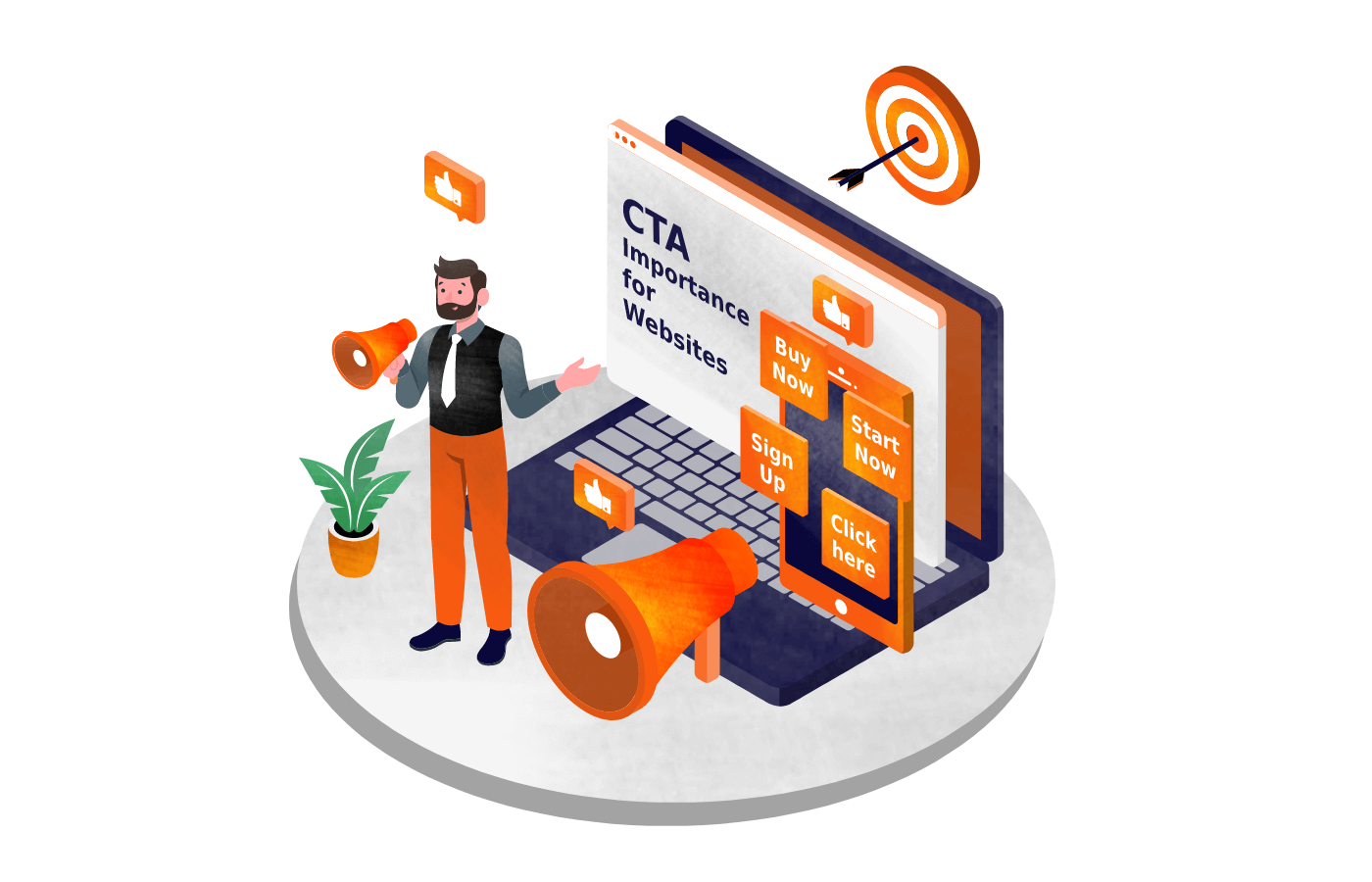
Use Eye-catching Colors
One of the most critical elements of banner ad design is choosing the right colors. Bright and contrasting colors tend to catch viewers' attention, making them more likely to notice the ad. For example, if the banner ad is on a website with a white background, using a bright red or blue background can make it stand out. However, it's essential to use colors that match your brand and the message you're trying to convey.
Keep It Simple
When it comes to banner ad design, less is more. Keep your design simple, with a clear focus on the message you want to convey. Avoid using too many images or text, which can be overwhelming for viewers. A simple and straightforward design can make it easier for viewers to understand the ad's message and make them more likely to click on it.
Add Clear Call-to-Actions
A clear and concise call-to-action (CTA) is essential in banner ad design. The CTA is the button or link that viewers click on to take the desired action, such as making a purchase or signing up for a newsletter. Make sure the CTA is prominently displayed, and the text is easy to read. Using action-oriented language like "Buy Now" or "Sign Up Today" can motivate viewers to take action.
Choose the Right Font
The font you use in your banner ad design can significantly impact its effectiveness. Choosing a font that's easy to read is crucial, as viewers may not click on an ad they can't read. Sans-serif fonts like Arial or Helvetica are popular choices for banner ad design, as they're easy to read and look good on all devices.
Make Sure the Banner Ad is Mobile-Friendly
With the increasing amount of mobile traffic, it's crucial to design banner ads that are mobile-friendly. Make sure the ad's size and layout are optimized for mobile devices, with clear and easy-to-read text and images. Mobile users tend to have a shorter attention span, so make sure the ad's message is clear and concise.
Test and Optimize
Testing and optimizing your banner ad design is crucial to improving its effectiveness. A/B testing is a popular method to test different designs to see which one performs better. Try different colors, fonts, and CTAs to see which one generates the most clicks. Keep testing and optimizing your banner ad design to ensure its maximum effectiveness.
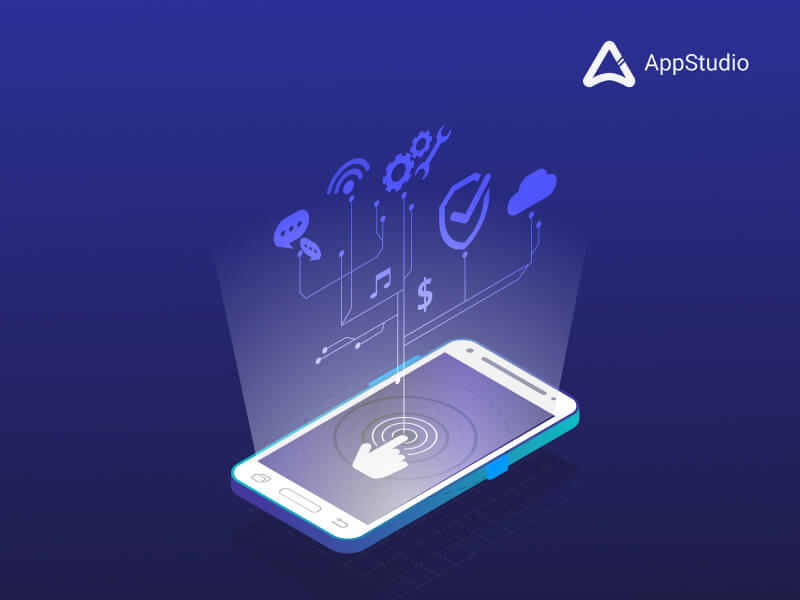
Conclusion
Effective banner ad design is essential to boost clicks and drive traffic to your website. By using eye-catching colors, keeping it simple, adding clear CTAs, choosing the right font, making it mobile-friendly, and testing and optimizing, you can create banner ads that stand out from the competition. Remember to keep your design consistent with your brand and message, and always strive to improve and optimize your design for maximum effectiveness.
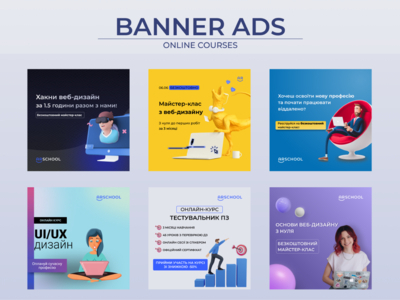
Maa Brahmacharini is the second form of Goddess Durga in Hindu mythology. This form of the goddess is worshipped on the second day of Navratri, which is a nine-day festival that celebrates the victory of good over evil. The name 'Brahmacharini' is derived from two words, 'Brahma' and 'charini', which mean 'one who practices penance' and 'the one who goes on foot', respectively. Hence, Maa Brahmacharini is the goddess of penance, purity, and sacrifice.
The depiction of Maa Brahmacharini is that of a beautiful young woman dressed in white, holding a japa mala or prayer beads in her right hand and a kamandal or water utensil in her left hand. She is shown walking barefoot with a calm and composed expression on her face. Her attire represents purity, simplicity, and austerity, which are the virtues that she embodies.

The legend behind Maa Brahmacharini's form is that she was born to King Himalaya and Queen Maina. Her name was Parvati, and she was known for her beauty and grace. She fell in love with Lord Shiva and wanted to marry him. However, Lord Shiva was known for his asceticism and did not want to get married. Parvati was determined to win him over, so she left her luxurious life and went to the forest to do penance and practice austerities.
Parvati meditated for years, enduring extreme heat and cold and subsisting on a diet of fruits and roots. She became known as Brahmacharini, the one who practices celibacy and austerity. Her unwavering devotion and self-control impressed Lord Shiva, and he eventually agreed to marry her.
The significance of Maa Brahmacharini's form is that it teaches us the importance of self-discipline, sacrifice, and determination. She is an inspiration for those who want to achieve success in life through hard work and perseverance. Her form also teaches us the importance of renunciation of material desires and attaining spiritual knowledge.
During Navratri, Maa Brahmacharini is worshipped on the second day of the festival. Devotees offer flowers, fruits, and sweets to her and chant mantras in her honor. By worshipping Maa Brahmacharini, we seek her blessings for spiritual growth and the strength to overcome our material desires.
Maa Brahmacharini is believed to have meditated for years in the forests of the Himalayas, and her worship is said to grant spiritual enlightenment, self-control, and detachment from worldly desires. She is considered an embodiment of tapasya, or penance, which is the path to attaining self-realization and liberation. Her teachings emphasize the importance of discipline, restraint, and renunciation in the pursuit of spiritual goals.

The significance of Maa Brahmacharini's worship is not limited to spiritual enlightenment alone. It also has a broader social and cultural significance. Her worship teaches us to lead a simple and disciplined life, practice self-restraint, and work hard with dedication and perseverance. These values are essential for personal growth and also contribute to the betterment of society as a whole.
In conclusion, Maa Brahmacharini is an embodiment of the divine feminine energy that represents knowledge, wisdom, and determination. She is a symbol of purity, simplicity, and austerity, and her worship during Navratri is believed to bring blessings of spiritual growth, strength, and success. May we all seek her blessings and strive to embody her virtues in our daily lives.

2023 is shaping up to be a great year for movies. There are a number of highly anticipated films set to be released, including sequels to popular franchises, original stories from acclaimed filmmakers, and everything in between. Here are the top 10 movies of 2023 that you won't want to miss:
1. Guardians of the Galaxy Vol. 3
The third installment in the Guardians of the Galaxy franchise is finally here! James Gunn is back in the director's chair, and the original cast is returning, including Chris Pratt, Zoe Adana, Dave Bautista, Vin Diesel, Bradley Cooper, and Karen Gillian. The film will see the Guardians team up with Adam Warlock (Will Oulter) to face off against a new threat.
2. Ant-Man and the Wasp: Quadrumana
Paul Rudd and Evangeline Lilly return as Ant-Man and the Wasp in this third installment in the series. The film will see the duo team up with Kang the Conqueror (Jonathan Majors), a time-traveling villain who is threatening the entire universe.
3. The Flash
Ezra Miller returns as Barry Allen, aka The Flash, in this DC Comics film. The film will see Barry travel back in time to prevent his mother's murder, but his actions could have unintended consequences. Michael Keaton will also reprise his role as Bruce Wayne, aka Batman.
4. Aquamin and the Lost Kingdom
Jason Myoma returns as Aquaman in this sequel to the 2018 film. The film will see Aquamin team up with Mera (Amber Heard) to protect Atlantis from a new threat. Patrick Wilson will also reprise his role as Oram, Aquaman's half-brother.
5. The Little Mermaid
Halle Bailey stars as Ariel in this live-action adaptation of the Disney animated classic. The film also stars Javier Bardem as King Triton, Awkwafina as Scuttle, and Melissa McCarthy as Ursula.
6. Oppenheimer
Cillin Murphy stars as J. Robert Oppenheimer, the scientist who led the Manhattan Project to develop the atomic bomb. The film is directed by Christopher Nolan, and it also stars Emily Blunt, Robert Downey Jr., Matt Damon, Florence Pugh, and Kenneth Briana.
7. Babylon
Brad Pitt and Margot Robbie star in this period drama set in Hollywood during the Golden Age of cinema. The film is directed by Damien Chazelle, and it also stars Tobey Maguire, Olivia Wilde, and Spike Jonze.
8. Elvis
Baz Luhrmann directs this biopic about Elvis Presley. Austin Butler stars as Elvis, and Tom Hanks stars as his manager, Colonel Tom Parker.
9. Nope
Jordan Peele directs this sci-fi thriller about two ranch hands who witness a mysterious and abnormal event. The film stars Daniel Kaluuya, Keke Palmer, and Steven Yeun.
10. Top Gun: Maverick
Tom Cruise returns as Pete "Maverick" Mitchell in this sequel to the 1986 film. The film also stars Miles Teller, Jennifer Connelly, Jon Hamm, and Val Kilmer.
These are just a few of the many great movies that are set to be released in 2023. With so much to choose from, there's sure to be something for everyone. So get ready for a year of great cinema!

Introduction: Social media marketing has become an integral part of digital marketing strategies for businesses worldwide. The ever-increasing reach of social media platforms and the ability to target specific audiences have made them an attractive marketing tool. However, social media marketing is not without its pitfalls. In this blog post, we will discuss five avoidable pitfalls of the social media marketing that businesses must be aware of to maximize their returns on investment (ROI).

Table of Contents:
- Focusing on the wrong metrics
- Not understanding your audience
- Ignoring negative feedback
- Lack of consistency in posting
- Not having a clear strategy
Focusing on the wrong metrics:
One of the common pitfalls of social media marketing is focusing on the wrong metrics. Businesses often make the mistake of focusing on vanity metrics such as the number of followers or likes, rather than meaningful metrics such as engagement rate and conversion rate. Having a large number of followers or likes does not necessarily translate into higher sales or ROI. Therefore, it is essential to focus on metrics that have a direct impact on the business's bottom line.
Not understanding your audience:
Another pitfall of social media marketing is not understanding your audience. Businesses must understand their target audience's preferences, interests, and behavior to create content that resonates with them. Failing to understand your audience can lead to ineffective marketing campaigns, resulting in lower engagement and conversion rates.
Ignoring negative feedback:
Ignoring negative feedback on social media can be detrimental to a business's reputation. Negative feedback provides an opportunity for businesses to address their customers' concerns and improve their products or services. Ignoring negative feedback can result in a damaged reputation and loss of customers.
Lack of consistency in posting:
Consistency is key when it comes to social media marketing. Posting regularly on social media platforms helps keep your brand in front of your audience, improves engagement, and helps build a loyal following. Failing to post regularly can result in a decrease in engagement and followers.
Not having a clear strategy:
Not having a clear strategy is a significant pitfall of social media marketing. A clear strategy helps businesses define their objectives, target audience, and metrics for success. Without a clear strategy, businesses risk wasting time and money on ineffective social media marketing campaigns.

Conclusion:
Social media marketing is a powerful tool for businesses to reach their target audience and improve their bottom line. However, it is essential to avoid the common pitfalls of social media marketing to maximize the returns on investment. By focusing on meaningful metrics, understanding your audience, addressing negative feedback, posting consistently, and having a clear strategy, businesses can create effective social media marketing campaigns that deliver results.

Instagram is one of the most popular social media platforms in the world, with over 1 billion active users. It's a great platform for businesses and individuals to showcase their products, services, and personal brands. However, getting your first or next 1,000 followers can be challenging. In this blog post, we'll share some tips on how to gain your first (or next) 1,000 Instagram followers.
1. Optimize your profile
Your Instagram profile is your first impression, and it needs to be compelling enough to make people want to follow you. Your profile should include a clear profile picture, a bio that accurately describes who you are and what you do, and a link to your website or blog.
2. Post consistently
Consistency is key when it comes to gaining followers on Instagram. You should aim to post at least once a day, and at the same time each day if possible. This will help your followers know when to expect new content from you.
3. Use relevant hashtags
Hashtags are a great way to get your content seen by people who are interested in what you have to offer. You should research and use relevant hashtags in your posts, as well as create your own branded hashtags to help build your brand.
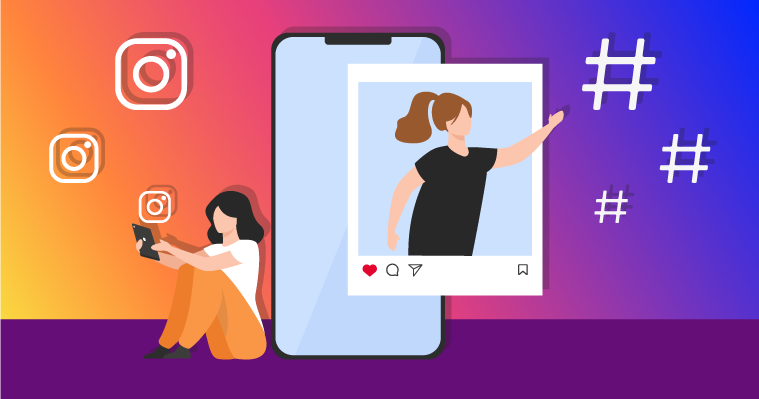
4. Engage with your followers
Engagement is crucial on Instagram, and it's important to respond to comments and messages from your followers. You should also like and comment on other people's posts to build relationships and get your name out there.
5. Run contests and giveaways
Contests and giveaways are a great way to gain followers and increase engagement on your posts. You can ask people to follow you, like your post, and tag their friends for a chance to win a prize. This will help you reach a wider audience and gain new followers.
6. Collaborate with others
Collaborating with other Instagram users in your niche is a great way to gain new followers. You can do this by doing shoutouts for each other, creating joint posts or giveaways, or even hosting Instagram Live sessions together.
7. Use Instagram ads
If you have a budget, using Instagram ads can be a great way to reach a wider audience and gain new followers. You can create targeted ads that reach people who are interested in your niche, and you can set a budget that works for you.
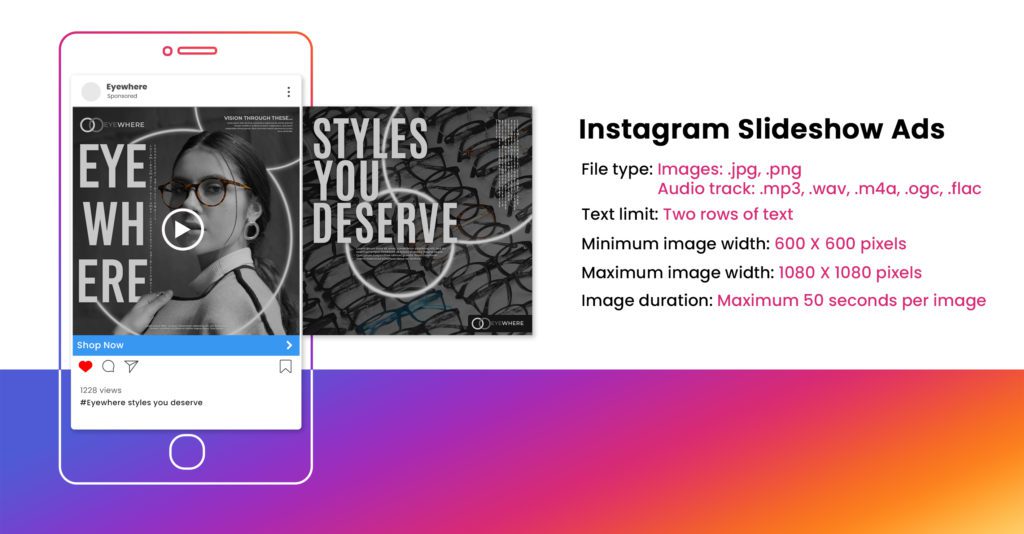
8. Post High-Quality Content
Instagram is a visual platform, and the quality of your content matters a lot. Therefore, you need to ensure that you post high-quality content that is visually appealing and interesting. You can post pictures, videos, or a combination of both. Also, it is essential to maintain a consistent style and aesthetic throughout your feed to build brand recognition and attract your target audience.
9. Create quality content
Your content is what will keep your followers engaged and attract new ones. Focus on creating high-quality and visually appealing content that aligns with your brand and appeals to your target audience. Use a mix of photos, videos, and stories to keep your content fresh and interesting.
10. Promote Your Instagram Account
Finally, don't be afraid to promote your Instagram account across your other social media channels, email newsletter, or website. Encourage your followers to follow you on Instagram and share your content with their own followers. You can also run Instagram ads to increase your visibility and attract new followers.
In conclusion, gaining your first or next 1,000 Instagram followers takes time and effort, but by following these tips, you can increase your visibility, attract new followers, and grow your brand or personal image on the platform. Remember to define your target audience, optimize your profile, create high-quality content, use hashtags, engage with your audience, collaborate with others, and promote your Instagram account across other channels.

For years, chocolate has been demonized as a diet-buster. But new research suggests that eating chocolate in moderation may actually help you lose weight.
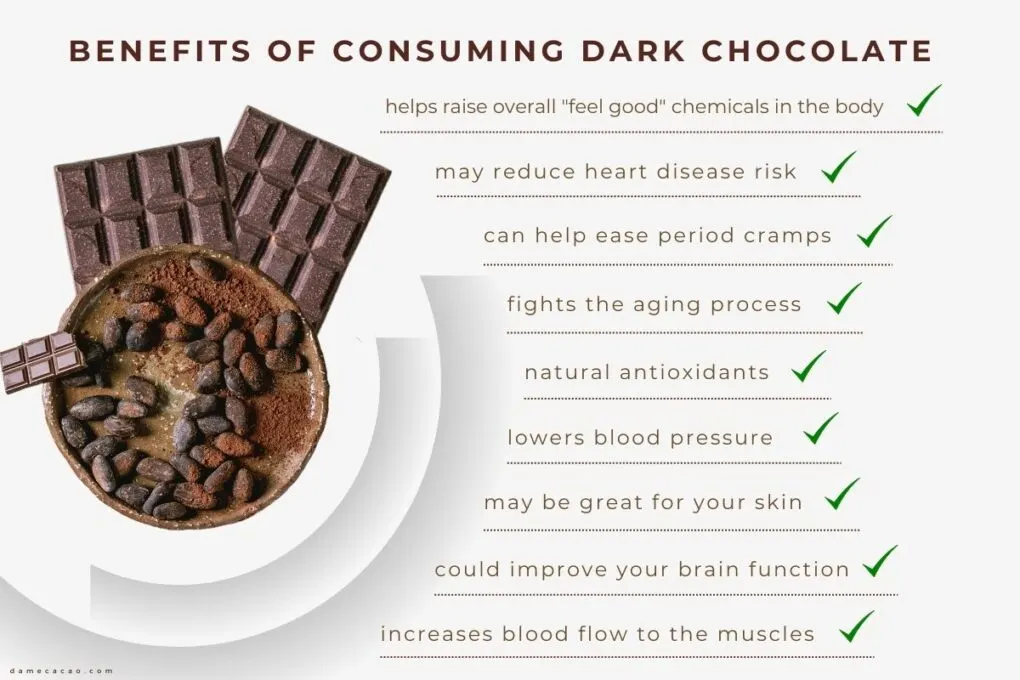
A study published in the journal "Nutrition and Metabolism" found that people who ate dark chocolate for two weeks lost more weight and body fat than those who didn't eat chocolate. The study participants who ate chocolate also had lower levels of insulin and inflammation, two factors that can contribute to weight gain.
Another study, published in the journal "Appetite," found that people who ate dark chocolate for four weeks had a greater increase in fullness and a decrease in appetite than those who didn't eat chocolate.

So why does chocolate seem to help with weight loss? There are a few possible explanations.
First, chocolate contains flavones, which are antioxidants that have been shown to have a variety of health benefits, including improving blood flow and reducing inflammation. Flavonol may also help to boost metabolism and promote weight loss.
Second, chocolate contains fiber, which can help you feel full and satisfied after eating. Fiber also helps to slow down the absorption of sugar into the bloodstream, which can help to prevent spikes in insulin levels and subsequent cravings.
Finally, chocolate contains magnesium, a mineral that is essential for many bodily functions, including regulating blood sugar levels. Magnesium deficiency has been linked to weight gain, so eating chocolate may help to prevent this.
Of course, it's important to note that chocolate is still a calorie-dense food, so it's important to eat it in moderation. A good rule of thumb is to stick to one to two ounces of dark chocolate per day.
If you're looking for a healthy way to enjoy chocolate, look for dark chocolate that is at least 70% cocoa. Dark chocolate contains more flavones than milk chocolate, and it's also lower in sugar and calories.
So go ahead and indulge your chocolate craving—just do it in moderation!
How to Enjoy Chocolate in Moderation
Here are a few tips for enjoying chocolate in moderation:
- Choose dark chocolate that is at least 70% cocoa.
- Limit yourself to one to two ounces of chocolate per day.
- Eat chocolate as part of a healthy meal or snack.
- Pair chocolate with fruits or nuts to add fiber and protein.
- Avoid eating chocolate late at night, as it can interfere with sleep.
If you follow these tips, you can enjoy chocolate without sabotaging your weight loss goals.
Conclusion
The research on chocolate and weight loss is still in its early stages, but the results so far are promising. If you're looking for a healthy way to indulge your chocolate craving, dark chocolate may be a good option for you. Just be sure to eat it in moderation and as part of a healthy diet.

Here are the top 5 plagiarism checker sites:
- Turnitin
- Grammarly
- Copyscape
- Quetext
- Plagiarism Checker X
Each of these sites offers unique features and benefits, but they all serve the purpose of detecting plagiarism in written content. Turnitin is widely used in academic settings, while Grammarly and Copyscape are popular among writers and website owners. Quetext and Plagiarism Checker X are also great options for students and writers looking for a reliable and accurate plagiarism checker.
Plagiarism is a serious issue in the academic and online world. To avoid plagiarism, it is necessary to use a plagiarism checker site. A plagiarism checker site is a tool that detects any plagiarism in written content. In this blog, we will discuss the top plagiarism checker sites that are widely used by students, teachers, writers, and researchers.
-
Turnitin: Turnitin is one of the most widely used plagiarism checker sites. It is popular among universities and colleges. Turnitin compares the submitted text with millions of other documents to check for plagiarism. It also provides a detailed report that shows the percentage of plagiarized content and the sources where the text has been copied.
-
Grammarly: Grammarly is a popular writing tool that also offers a plagiarism checker feature. It checks for plagiarism by comparing the submitted text with billions of web pages and academic databases. Grammarly also provides a detailed report that shows the percentage of plagiarized content and the sources where the text has been copied.
-
Copyscape: Copyscape is a plagiarism checker site that is used by website owners to check for plagiarism in online content. It compares the submitted text with other websites to check for plagiarism. Copyscape also provides a detailed report that shows the percentage of plagiarized content and the sources where the text has been copied.
-
Quetext: Quetext is a free plagiarism checker site that is widely used by students and writers. It checks for plagiarism by comparing the submitted text with other documents on the internet. Quetext also provides a detailed report that shows the percentage of plagiarized content and the sources where the text has been copied.
-
Plagiarism Checker X: Plagiarism Checker X is a powerful plagiarism checker site that is widely used by universities and colleges. It checks for plagiarism by comparing the submitted text with other documents on the internet and academic databases. Plagiarism Checker X also provides a detailed report that shows the percentage of plagiarized content and the sources where the text has been copied.
In conclusion, these are the top plagiarism checker sites that are widely used by students, teachers, writers, and researchers. Using a plagiarism checker site ensures that the content is original and free of plagiarism. It is important to note that plagiarism is a serious offense, and using a plagiarism checker site can help avoid any issues related to plagiarism.
Read Also : Top 5 Customer Review Sites for Collecting Business And Product Reviews

Oscar, also known as the Academy Award, is the most prestigious and coveted prize in the world of cinema. Every year, Hollywood's brightest stars gather to celebrate the best in film, television, and visual effects. But who was Oscar? What are the surprising facts and myths behind this iconic award?
Contrary to popular belief, Oscar was not a real person. The award was named after Margaret Herrick, the Academy's librarian, who remarked that the statue resembled her uncle Oscar. The nickname stuck, and in 1939, the Academy officially adopted the name "Oscar" for the golden statuette.

The first Academy Awards ceremony took place in 1929 at the Hollywood Roosevelt Hotel. The ceremony was a modest affair, with just 270 guests in attendance. The winners were announced in advance, and the ceremony lasted just 15 minutes. The first winner of the Best Picture award was the silent film "Wings."
Over the years, the Oscars have become more elaborate, with hundreds of guests in attendance and live television broadcasts watched by millions of people worldwide. The ceremony has also faced its fair share of controversies, from snubs and surprises to allegations of bias and lack of diversity.
One of the most enduring myths about the Oscars is that winner must deliver a lengthy acceptance speech. In fact, winners are given just 45 seconds to make their remarks before the orchestra starts playing. However, some winners have managed to make their mark with memorable speeches, such as Halle Berry's emotional tribute to other black actresses when she won Best Actress in 2002.
Another myth is that the Oscars are a reflection of popular opinion. In reality, the awards are decided by the members of the Academy of Motion Picture Arts and Sciences, a group of over 9,000 industry professionals. While the awards are not a perfect reflection of popular opinion, they do often highlight exceptional work that might otherwise go unnoticed.
Despite its flaws, the Oscars remain a celebration of the best in film, television, and visual effects. They serve as a reminder of the power of storytelling and the magic of cinema. Whether you're a die-hard movie buff or a casual viewer, the Oscars are an event worth celebrating.

Over the years, the Oscars have become not only a celebration of artistic achievement in filmmaking but also a major event in popular culture. The ceremony is broadcast live around the world, and viewers tune in to see their favorite stars on the red carpet and to find out who will take home the coveted awards.
But with great fame comes great scrutiny, and the Oscars have not been immune to controversy over the years. In recent years, critics have accused the Academy of being out of touch with the diversity of the film industry, leading to the popularization of the hashtag #OscarsSoWhite. In response, the Academy has taken steps to diversify its membership and voting process, but the issue remains a topic of ongoing discussion.
Despite the occasional controversies, the Oscars remain a beloved institution in the world of film, and winning an Oscar is still considered one of the highest honors in the industry. From the classic Hollywood glamour of the early years to the modern-day spectacle of today's ceremonies, the Oscars have come a long way since their inception in 1929. And though the history of Oscar himself may be shrouded in mystery, his legacy as a symbol of artistic excellence lives on.
The Design of the Oscar Statuette
The Oscar statuette is one of the most recognizable symbols in the world of entertainment. The statuette stands 13.5 inches tall and weighs 8.5 pounds, and is made of gold-plated bronze. The design of the statuette is also steeped in myth and legend.
According to one story, the statuette was modeled after Mexican actor Emilio Fernandez, who was famous for his muscular physique. However, this story has been debunked by the Academy, who have stated that the statuette was designed by artist Cedric Gibbons and sculpted by George Stanley.

The design of the statuette is said to represent a knight holding a crusader's sword. The five spokes on the base of the statuette represent the five original branches of the Academy: actors, directors, producers, technicians, and writers. The statuette's blank face is said to represent the anonymity of the actors who receive the award.
In Conclusion
The Academy Awards are a beloved institution in the world of entertainment, and the statuette known as "Oscar" is an iconic symbol of excellence in filmmaking. While the origins of the name "Oscar" are somewhat less glamorous than the myths would have us believe, the history and tradition of the Academy Awards continue to captivate audiences around the world. Whether you're a die-hard film buff or just a casual viewer, the Oscars are a must-see event that captures the glamour, excitement, and drama of Hollywood.

Social media apps have become a ubiquitous presence in our lives, allowing us to connect with others, share our experiences, and stay informed about the world around us. However, while these apps offer many benefits, there is a darker side to social media that is often overlooked. In this blog, we will explore the risks associated with social media apps and discuss ways that users can take control of their social media usage.
Addiction: The Dark Side of Social Media
Social media apps are designed to be addictive, with features like endless scrolling, notifications, and personalized content that keep users engaged for hours at a time. This addiction can lead to decreased productivity, poor mental health, and even physical health problems like eye strain and neck pain. To combat this addiction, users can set time limits on their social media usage, turn off notifications, and take breaks when necessary.

Mental Health: The Toll of Social Media on Our Well-Being
Studies have shown that excessive social media use can lead to depression, anxiety, and low self-esteem. Social media also makes it easy for cyberbullying to occur, which can have a devastating effect on mental health. To promote better mental health, users should be mindful of their social media use, avoid comparing themselves to others, and seek professional help if needed.
Privacy Concerns: The Risks of Sharing Too Much
Social media apps collect a vast amount of data on their users, including their location, interests, and personal information. This data can be sold to advertisers or used to manipulate users through targeted advertising. It can also be stolen by hackers, putting users' personal information at risk. To protect their privacy, users should carefully manage their privacy settings, avoid sharing too much personal information, and use two-factor authentication to secure their accounts.
Misinformation: The Consequences of Fake News
Social media has been criticized for its role in the spread of misinformation and fake news. Users can easily share and amplify false information, which can have serious consequences, such as influencing elections or causing harm to public health. To combat misinformation, users should be vigilant in verifying the sources of information they share, avoid spreading rumors or unverified news, and report fake news to social media platforms.
Online Harassment: The Dangers of Cyberbullying
Social media platforms have also been criticized for their failure to prevent online harassment, hate speech, and other forms of harmful content. This has led to some users feeling unsafe and uncomfortable on these platforms. To combat online harassment, users should report any instances of harassment they experience or witness, block users who engage in harmful behavior, and seek support from trusted friends or professionals.
Taking Control: Strategies for Safe and Healthy Social Media Use
Despite the risks associated with social media, there are steps that users can take to mitigate these risks and enjoy safe and healthy social media use. Some strategies for taking control include:
- Setting time limits on social media usage
- Turning off notifications
- Being mindful of mental health and seeking professional help if needed
- Carefully managing privacy settings
- Avoiding sharing too much personal information
- Verifying sources of information before sharing
- Reporting instances of online harassment and blocking harmful users
In conclusion, social media apps offer many benefits, but they also come with risks that users should be aware of. By taking control of their social media usage and being mindful of these risks, users can enjoy safe and healthy social media use.

The climactic movie in the Avengers series is an irresistible blend of action and comedy, guaranteeing a sugar rush of delirious enjoyment
he previous Avengers movie, Infinity War, stunned believers and unbelievers alike with its sheer stupendous scale, and that devastating ending in which the evil Thanos appeared to have gained victory by getting hold of all six of the Infinity Stones, causing a crumbling-to-dust of many key players: a terrible cosmic loss, irreparable, irreversible, surely?
We were of course promised wild new surprises with this colossal climactic movie in the Marvel Cinematic Universe, written by Christopher Markus and Stephen McFeely and directed by the Russo brothers, Joe and Anthony. But would these surprises be .... new ways of coming to terms with the unchangeable disaster? Unexpected coping strategies? Novel means of simply accepting the Avengers’ stunningly permanent defeat?

Or could it be … something else? Paul Rudd, who plays Ant-Man, was challenged on TV about the possibility of his character shrinking to a tiny size, flying into some convenient orifice of the evil Thanos, and then grossly enlarging himself to make the great villain go splat like Mr. Creosote. Rudd declined to be drawn.
Well, I won’t disclose how things progress here, other than to say it allows the main players to revisit some of the scenes of their most spectacular franchise triumphs. And I have to admit, in all its surreal grandiosity, in all its delirious absurdity, there is a huge sugar rush of excitement to this mighty finale, finally interchanging with euphoric emotion and allowing us to say poignant farewells.

In chess, an “endgame” sees relatively few pieces on the board – but of course, this film is much more heavily populated. Tony Stark (Robert Downey Jr) is floating, desolately, in space, staring extinction in the face. Hawkeye (Jeremy Renner) confronts the loss of his family – a rather eerie, challengingly downbeat opening scene. Steve Rogers, formerly Captain America (Chris Evans) is helping others deal with their awful sense of cosmic grief. Rhodey (Don Cheadle) and Black Widow (Scarlett Johansson) are grimly getting on things. Captain Marvel (Brie Larson) is a vivid new presence in everyone’s lives.
And change is the keynote. Bruce Banner (Mark Ruffalo) has found a way to co-exist as a gentle human intellectual and a green monster. He is now half-man, half-hulk (mulk?) and is now reconciled to a new twilight of celebrity, accepting selfie opportunities with kids.

But Thor (Chris Hemsworth) is a worry. The great catastrophe has caused him to retreat to New Asgard, where he has put on an enormous amount of weight and morosely obsessed with beer and video games. It is a very funny performance from Hemsworth, emphasising that he is first among equals with the Avengers when it comes to comedy. Other people get funny lines as well, and the words “Mungo Jerry” gets one of the biggest laughs of the film.

But part of this movie is about how Thor comes to terms with the memory of his mother, Frigga (Rene Russo), and also in fact how Tony Stark achieves closure on the subject of his dad, Howard (John Slattery). And there are many more characters and subordinate narrative arcs to absorb. The poster is not an infallible guide. It is, as ever, a huge intricately detailed and interlocking mosaic of figures within that strange Avengers universe, which uniquely (and bizarrely) combines both the mythic and the contemporary – and which is here the stage for a Tolkienian quest.
Avengers: Endgame is entirely preposterous and, yes, the central plot device here does not, in itself, deliver the shock of the new. But the sheer enjoyment and fun that it delivers, the pure exotic spectacle, are irresistible, as is its insouciant way of combining the serious and the comic. Without the comedy, the drama would not be palatable. Yet without the earnest, almost childlike belief in the seriousness of what is at stake, the funny stuff would not work either. As an artificial creation, the Avengers have been triumphant, and as entertainment, they have been unconquerable.

Krishna - Indian mythological god. All Hindus or anyone who came across Hinduism must have listened the name once their life.
Shree Krishna was the 8th Avatar of The Almighty Lord Vishnu. Apart from being a god Krishna is also a spiritual leader who guided Arjuna in the epic battle of Mahabharata, Lord Krishna is known to be a mischievous kid as he used to stole butter from his mother and distribute among his friends. He educated everyone about devotion, dedication and love.
The Holy Bhagavad Gita is a book of learning that Krishna gave to Arjuna in his path of battle against evil. These are collected into 700 Verses each verse you can relate with your life. Whatever problem you are facing in life you can find the answer in The Geeta.
Let's have a look at 5 Learning you can take away from Shree Krishna's Life .
- Consider your Karma (Duty) as top priority
Shree Krishna says :
कर्मण्येवाधिकारस्ते मा फलेषु कदाचन |
मा कर्मफलहेतुर्भूर्मा ते सङ्गोऽस्त्वकर्मणि
Image-Courtsey : Google Images
Which means Do your duty and do not wish for fruitful outcomes, Enjoy the journey itself.
In our day to day life we face these situations where we overthink a scenario and forget to enjoy the process.
We should just focus on our duty and do our best, rest all become best. What is destined for us will come to us if we are on right path. - Everything happens because of some reason
Nothing in this world is happening without any context, there is always a reason behind everything that is happening with or around us. We need to look for the greater cause and move on with life. - Control your Rage
Anger leads to clouding of judgment, which results in bewilderment of the memory. When the memory is bewildered, the intellect gets destroyed; and when the intellect is destroyed, one is ruined.Anger affects you capability of judgement; in turn memory and intellect. Without intellect, a decision making gets affected. One who can control his anger is capable of controlling others. - Never Give up what you love
Image-Courtsey : Google Images
Ever wondered why among all other gods only Krishna used a musical instrument - a flute. Because, that's a way of educating others to follow their passion.
Lord Krishna, with a country to rule, a war to fight, demons to conquer and through various other commitments, still managed to inculcate the music he loved into his life. He never let his passion for music take a back seat on account of his commitments. He enjoyed playing his flute, mesmerizing those around him with lively tunes. - Be a Feminist when required

Image-Courtsey : Google Images
Remember how Krishna stood for Draupadi when the Kauravas tried to violate her?
Draupadi was stripped off her clothes and humiliated in front of the entire court. Her own husbands thought of her as a property they have lost in a game and didn’t move a muscle to protest. It was Krishna who stepped into the scene and presented her with a saree.
You must stand up and revolt whenever you see women being objectified, used as commodities or being violated.
The lesson is, it was not because he wanted to impress Draupadi. He acted so as to defend a woman’s dignity. He was acknowledged for his active involvement in defending women’s rights and that’s probably why he continues to reside in the hearts of women till date.

Freelance writing is a great way to make a living if you have the skills and the drive. But it's not easy. It takes hard work, dedication, and a willingness to learn. If you're thinking about starting a freelance writing career, here are a few tips from a pro:

- Find your niche. What are you passionate about? What do you know a lot about? Once you know what your niche is, you can start to target your writing to that audience.
- Build a portfolio. This is your chance to show potential clients what you can do. Make sure your portfolio includes a variety of writing samples, from blog posts to articles to website copy.
- Network. Get involved in online and offline writing communities. Attend industry events, connect with other writers on social media, and reach out to potential clients directly.
- Set rates. Don't undervalue your work. Do some research to find out what other freelance writers in your niche are charging.
- Be professional. This means meeting deadlines, responding to emails promptly, and delivering high-quality work.
- Market yourself. Let people know that you're a freelance writer. Create a website, promote your work on social media, and reach out to potential clients.
- Be persistent. It takes time to build a successful freelance writing career. Don't get discouraged if you don't get your first few gigs right away. Keep writing, keep networking, and keep marketing yourself.
If you follow these tips, you'll be well on your way to building a successful freelance writing career.
Here are some additional tips for freelance writers:
- Be organized. As a freelancer, you'll be juggling multiple projects and deadlines. It's important to be organized so that you don't miss anything.
- Set boundaries. It can be easy to overwork yourself when you're a freelancer. It's important to set boundaries and make sure you're taking care of yourself.
- Take breaks. It's also important to take breaks from writing. This will help you stay fresh and avoid burnout.
- Don't be afraid to ask for help. If you're struggling with something, don't be afraid to ask for help from other writers or professionals.
Freelance writing can be a great career choice, but it's important to be prepared for the challenges. If you're willing to work hard and put in the effort, you can be successful.
Here are some common mistakes that freelance writers make:
- Undercharging. As mentioned above, it's important to set rates that reflect your skills and experience. Don't undervalue your work.
- Not meeting deadlines. This is a surefire way to lose clients. Make sure you always meet deadlines, even if it means working late or on weekends.
- Not communicating with clients. It's important to keep clients updated on your progress and to let them know if there are any potential delays.
- Not delivering high-quality work. This is the most important thing. If you don't deliver high-quality work, you won't be able to keep clients.
If you avoid these common mistakes, you'll be well on your way to building a successful freelance writing career.

Want to buy a sleek, stylish, business style yet Gaming Oriented Laptop?
Well your search comes to an end now, HP has Launched its Ryzen series, and Not Gonna Lie HP is the most durable, reliable brand in the market.
I personally am using HP laptops for the past 10 years and not a single complaint whether about the software or the hardware.
The laptop which we are going to discuss today is HP 14s-fr0012AU. I will list down all the features, pros, and cons of buying a Ryzen laptop vs an intel laptop, and also last but not least: A Video Review.
Image Courtesy: Amazon
Processor: AMD Ryzen 5 3450U (2.1 GHz base clock, up to 3.5 GHz max boost clock, 4 MB L3 cache, 4 cores)
Operating System: Pre-loaded Windows 10 Home Single Language | Pre-Loaded Microsoft Office 2019
Display: 14 -inch FHD, IPS, micro-edge, brightview | Brightness: 250 nits | Screen Resolution: 1920 x 1080
Memory & Storage: 8 GB DDR4-2400 SDRAM (1 x 8 GB) & Expandable Up to 16 GB | Storage: 512GB PCIe NVMe SSD
Design & battery: Laptop weight: 1.46 kg | Battery life mixed usage = Up to 7 hours and 30 minutes | In the Box: Laptop, Battery, User Manual, and charger
Graphics: AMD Radeon Vega 8 Graphics
Camera & Microphone: HP True Vision 720p HD camera with integrated dual array digital microphones
Ports: 1 SuperSpeed USB Type-C (5Gbps), 2 SuperSpeed USB Type-A (5Gbps), 1 HDMI 1.4b, 1 RJ-45
One more excellent feature is that
You can upgrade it to Windows 11 and that too for FREE FREE FREE.
Now comes the Price :
You can tame this beast at just ₹42,990 INR

That's what we thought Jimmy, But it is real.
No need to mention but will do it any way you can get additional discounts by cashing in the Independence Day Sale.
Now the part for which you have clicked this link
Unboxing and Review

International Women's Day, celebrated on March 8th every year, is a day dedicated to the celebration of women's achievements, as well as to raising awareness about the ongoing fight for gender equality. The theme for this year's Women's Day is "Choose to Challenge," which encourages individuals to challenge gender bias and inequality in their own lives and communities. In this blog post, we will discuss the progress made toward women's empowerment, as well as the work that still needs to be done to achieve gender equality.

Over the past few decades, we have seen significant progress toward women's empowerment. More women than ever before are participating in the workforce, pursuing higher education, and taking on leadership roles. Women have made strides in breaking down barriers in traditionally male-dominated fields such as science, technology, engineering, and mathematics (STEM). Women have also gained more representation in politics and are now holding positions of power in government and other leadership roles.
However, despite the progress made, women still face numerous challenges in achieving gender equality. In many parts of the world, women are still subjected to gender-based violence, discrimination, and harassment. Women are often paid less than their male counterparts for doing the same job, and many face barriers to accessing education, healthcare, and other basic rights.
To continue the fight for gender equality, we must address these issues and work towards creating a more equitable society for all. This means challenging harmful gender stereotypes and promoting positive representations of women in media and advertising. It means working to close the gender pay gap and ensuring that women have access to the same opportunities as men in the workforce. It means providing women with access to education and healthcare, as well as protecting their reproductive rights.

One area where women continue to face discrimination is in the workplace. Women are still paid less than men for the same work, and they are often overlooked for leadership positions. It is important to continue advocating for equal pay and equal opportunities for women in all fields.
Another issue that women face is violence and harassment. According to the World Health Organization, one in three women worldwide has experienced physical or sexual violence in their lifetime. It is crucial to address this issue and provide support to survivors. We need to create a culture that does not tolerate any form of violence against women and girls.
Women's rights are human rights, and they should be protected and respected. Empowering women is not just a women's issue, but it is a societal issue. When women are empowered, they can contribute to the betterment of society as a whole.
We must continue to support initiatives that promote women's rights, such as education programs, women's leadership training, and access to healthcare. We should also continue to advocate for policies that promote gender equality, such as equal pay and parental leave.
In conclusion, while we celebrate the progress made in women's empowerment, we must continue the fight for gender equality. We must support and uplift women in all areas of life and create a world where women have the same opportunities and rights as men. Only then can we truly say that we have achieved gender equality.

Introduction:
Google Analytics is a free and powerful web analytics tool that helps website owners track and analyze their website traffic. With Google Analytics, you can gather insights into your website's performance, identify areas for improvement, and make data-driven decisions to optimize your website. In this blog post, we will discuss how to maximize website insights with Google Analytics using the best SEO practices.

Table of Contents:
- Setting up Google Analytics for Your Website
- Understanding Key Metrics in Google Analytics
- Analyzing Traffic Sources and Behavior
- Tracking Conversions and Goals
- Improving Your Website with Insights
- Best SEO Practices for Google Analytics

Setting up Google Analytics for Your Website:
To use Google Analytics, you first need to set up an account and add the tracking code to your website. You can sign up for a free account on the Google Analytics website and follow the step-by-step instructions to add the tracking code to your website. Once set up, Google Analytics will start collecting data about your website visitors and their behavior.
Understanding Key Metrics in Google Analytics:
Google Analytics provides a wealth of data and metrics to help you understand your website's performance. Some of the key metrics to look at include page views, bounce rate, time on site, and conversion rate. By understanding these metrics, you can identify areas where your website is performing well and areas that need improvement.
Analyzing Traffic Sources and Behavior:
Google Analytics can also help you analyze where your website traffic is coming from and how users behave on your site. You can see which channels are driving the most traffic, which pages are the most popular, and how long users are spending on your site. This information can help you optimize your website for a better user experience and higher conversions.
Tracking Conversions and Goals:
Google Analytics also allows you to track specific actions on your website, such as form submissions or product purchases. By setting up goals and tracking conversions, you can see how your website is performing in terms of meeting your business objectives. You can also see which channels and campaigns are driving the most conversions and adjust your marketing strategy accordingly.
Improving Your Website with Insights:
By using the insights provided by Google Analytics, you can make data-driven decisions to improve your website. You can identify areas where users are dropping off and optimize those pages for better engagement. You can also test different versions of your website to see which performs best and make changes accordingly.
Best SEO Practices for Google Analytics:
To maximize your website insights with Google Analytics, it's important to follow the best SEO practices. This includes optimizing your website for keywords, creating high-quality content, and building quality backlinks. By optimizing your website for SEO, you can improve your website's visibility in search engines and drive more traffic to your site.

Conclusion:
Google Analytics is a powerful tool that can help you gather insights into your website's performance and make data-driven decisions to improve your website. By following best SEO practices, you can maximize the value of Google Analytics and optimize your website for better user experience and higher conversions.

The ancient practice of yoga has gained immense popularity in recent years, not only as a means of achieving physical and mental well-being but also as a thriving business opportunity. India, the birthplace of yoga, offers a rich and diverse market for entrepreneurs looking to establish their yoga studios. In this blog, we will delve into the essential steps and considerations for starting a successful yoga studio business in India.

Understanding the Yoga Industry in India
Before embarking on your yoga studio journey, it's crucial to gain a deep understanding of the yoga industry in India. Explore the current trends, demand, and competition within the market. Analyze the target audience, their preferences, and the specific geographical locations where yoga studios thrive.
Crafting Your Unique Yoga Studio Concept
To stand out in a competitive market, it's essential to develop a unique and compelling concept for your yoga studio. Determine your niche, whether it's offering a specific yoga style, targeting a particular demographic, or incorporating additional wellness services. Define your brand identity, mission, and values to differentiate yourself from other studios.
Researching Legal and Regulatory Requirements
Before launching your yoga studio, ensure you comply with all legal and regulatory requirements in India. Research local business laws, permits, licenses, and certifications necessary to operate a yoga studio. Consult with legal professionals to ensure a smooth and legal establishment of your business.
Location and Studio Space
Selecting the right location for your yoga studio is crucial for its success. Look for areas with high foot traffic, proximity to residential areas or corporate hubs, and accessibility. Consider the size and layout of the space to accommodate yoga classes, reception areas, changing rooms, and other amenities. Create an inviting and peaceful ambiance that aligns with your studio concept.
Equipment and Studio Setup
Invest in high-quality yoga props, mats, blocks, bolsters, and other equipment required for yoga classes. Create a comfortable and serene environment by choosing soothing colors, appropriate lighting, and natural elements. Design an efficient layout that allows for seamless movement during classes and a relaxing experience for your clients.
Building a Qualified and Passionate Team
Assemble a team of qualified and passionate yoga instructors who align with your studio's vision. Look for instructors who possess the necessary certifications and experience to offer diverse and engaging yoga classes. Foster a positive and supportive work environment that encourages continuous learning and professional growth.
Marketing and Promotion
Develop a comprehensive marketing strategy to promote your yoga studio. Utilize digital marketing tools such as a professional website, social media platforms, and email marketing campaigns. Collaborate with local influencers, wellness bloggers, and health-related events to raise awareness about your studio. Offer introductory packages, referral programs, and loyalty rewards to attract and retain clients.
Client Experience and Retention
Focus on providing an exceptional client experience to ensure customer satisfaction and loyalty. Offer a range of class options, including different levels, styles, and durations, to cater to various preferences. Create a welcoming and inclusive atmosphere where clients feel comfortable and supported. Implement customer feedback mechanisms and continually adapt your offerings to meet their evolving needs.
Financial Management and Sustainability
Establish a robust financial management system to monitor your studio's revenue, expenses, and profitability. Develop a realistic business plan and budget, taking into account operational costs, marketing expenses, staff salaries, and contingency funds. Explore additional revenue streams such as retail sales of yoga-related products, workshops, and retreats to enhance sustainability.
Continuous Growth and Adaptation
The yoga industry is dynamic and constantly evolving. Stay updated with the latest trends, research, and innovations in yoga and wellness. Continuously invest
in your own professional development as a yoga studio owner. Attend workshops, conferences, and training programs to expand your knowledge and skills. Keep an eye on market trends and adapt your offerings accordingly to meet the changing demands of your clientele.
Community Engagement and Collaboration
Engage with the local yoga community and establish partnerships with complementary businesses. Collaborate with wellness centers, gyms, spas, and nutritionists to cross-promote services and reach a wider audience. Host community events, workshops, and charity initiatives to foster a sense of belonging and give back to society.
Embracing Technology
Integrate technology into your yoga studio operations to streamline processes and enhance the client experience. Implement online class booking and scheduling systems, offer virtual classes for remote clients, and leverage social media platforms for marketing and engagement. Explore yoga-specific apps and online platforms to extend your reach beyond the physical studio space.
Nurturing Client Relationships
Build strong relationships with your clients by fostering open communication, providing personalized attention, and acknowledging their progress and achievements. Offer loyalty programs, referral incentives, and special promotions to reward their continued support. Encourage client feedback and act upon it to improve your services continually.
Professional Associations and Certifications
Join professional yoga associations and seek certifications that enhance your credibility and expertise. Membership in such associations provides access to resources, networking opportunities, and industry insights. Stay informed about industry standards, best practices, and ethical guidelines to ensure the highest quality of service.
Overcoming Challenges and Perseverance
Running a yoga studio business comes with its own set of challenges. Be prepared to face obstacles such as financial fluctuations, competition, and seasonality. Cultivate resilience, adaptability, and a positive mindset to navigate through difficult times. Seek support from mentors, industry peers, and business networks to overcome challenges and stay motivated.
Conclusion:
Starting a yoga studio business in India requires careful planning, a clear vision, and a passion for promoting well-being. By understanding the market, crafting a unique concept, and creating a nurturing environment, you can set the foundation for a successful venture. With a focus on client experience, effective marketing strategies, and continuous growth, you can establish your yoga studio as a prominent player in the thriving yoga industry in India. Embrace the journey of entrepreneurship, stay committed to your vision, and make a positive impact on the lives of your clients through the transformative power of yoga.

Introduction: In today's digital age, businesses are continuously looking for ways to increase their online visibility, attract more traffic to their website, and ultimately, generate more leads and sales. One of the most effective ways to achieve these goals is through Pay-Per-Click (PPC) advertising. PPC advertising is an online marketing model in which advertisers pay a fee each time one of their ads is clicked. In this guide, we will discuss how to maximize results with PPC advertising.

Table of Contents:
- Setting Up a PPC Campaign
- Keyword Research
- Ad Creation
- Landing Pages
- Ad Monitoring and Optimization
- Budgeting

Setting Up a PPC Campaign:
The first step in maximizing results with PPC advertising is to set up a PPC campaign. This involves creating an account with a PPC advertising platform, such as Google Ads or Bing Ads. Once you have created an account, you can start creating your campaign. In order to get the most out of your campaign, you should ensure that you have a clear understanding of your target audience and your advertising goals.
Keyword Research:
Keyword research is a crucial aspect of PPC advertising. It involves identifying the keywords that your target audience is using to search for products or services similar to yours. This information is used to create targeted ads that appear when a user types in those specific keywords. By conducting thorough keyword research, you can ensure that your ads are seen by the right people at the right time.
Ad Creation:
The creation of your PPC ads is another critical component of maximizing results. Your ads should be compelling, relevant, and engaging to your target audience. You should also ensure that your ad copy is aligned with your landing pages to create a seamless user experience.
Landing Pages:
The landing page is where users are directed when they click on your ad. Your landing page should be designed to convert visitors into leads or customers. The page should be easy to navigate, visually appealing, and contain all the necessary information about your product or service.
Ad Monitoring and Optimization:
Once your ads are live, you should monitor their performance regularly. By doing so, you can identify which ads are performing well and which ones are not. You can then optimize your ads by making adjustments to your ad copy, landing pages, and targeting to improve their performance.
Budgeting:
Finally, you should consider your budget when maximizing results with PPC advertising. You should determine how much you are willing to spend on your campaign and ensure that you are getting a positive return on investment (ROI) for your ad spend.

Conclusion:
PPC advertising is an effective way to increase online visibility, attract more traffic to your website, and generate more leads and sales. By following the tips outlined in this guide, you can maximize your results and achieve your advertising goals. Remember to conduct thorough keyword research, create compelling ads and landing pages, monitor and optimize your ads regularly, and consider your budget when setting up your campaign.

The Indian Premier League, popularly known as the IPL, is one of the most exciting and lucrative cricket tournaments in the world. It was first launched in 2008 by the Board of Control for Cricket in India (BCCI) as a Twenty20 cricket tournament featuring eight teams representing different cities in India. Over the years, the tournament has grown in popularity, attracting some of the biggest names in cricket from around the world and turning into a global phenomenon.
One of the most exciting aspects of the IPL is the fierce competition between the teams, with each franchise vying for the coveted IPL trophy. The tournament follows a round-robin format, with each team playing a total of 14 matches in the league stage. The top four teams then qualify for the playoffs, which include two qualifier matches and an eliminator match before the final.
Over the years, several teams have emerged as top contenders for the IPL trophy. The Mumbai Indians, led by Rohit Sharma, are the most successful team in the tournament's history, having won the trophy a record five times. They first won the title in 2013 and have since gone on to win it four more times in 2015, 2017, 2019, and 2020.

The Chennai Super Kings, led by MS Dhoni, are the second-most successful team in IPL history, having won the title three times in 2010, 2011, and 2018. The Kolkata Knight Riders, led by Eoin Morgan, and the Sunrisers Hyderabad, led by Kane Williamson, have both won the IPL title twice.
Other teams that have won the IPL trophy include the Rajasthan Royals, who won the inaugural IPL in 2008, and the Deccan Chargers, who won the tournament in 2009. The Royal Challengers Bangalore, Kings XI Punjab, and Delhi Capitals are the only teams to have reached the IPL final without winning the tournament.
Cricket is a sport that unites people across the world, and nowhere is this more evident than in the Indian Premier League or IPL. Every year, the IPL brings together some of the best cricketers from around the world to compete for the coveted IPL trophy. The tournament is a true spectacle, with millions of fans tuning in to watch the action unfold.

Over the years, several teams have emerged as strong contenders for the IPL title. The Mumbai Indians, led by Rohit Sharma, are the most successful team in the tournament's history, having won the trophy a record five times. Their performances have been consistently impressive, with the team displaying a formidable combination of strong batting, disciplined bowling, and exceptional fielding.
The Chennai Super Kings, led by MS Dhoni, has also been a dominant force in the IPL, winning the title three times. The team is known for its consistency and strong leadership, with Dhoni leading from the front and inspiring his teammates to perform at their best.
Other teams that have performed well in the IPL include the Kolkata Knight Riders, led by Eoin Morgan, and the Sunrisers Hyderabad, led by Kane Williamson. Both teams have won the IPL twice and have consistently been in contention for the title.
The IPL is not just a battle for glory; it is also a platform for young and upcoming players to showcase their talent. Many players who have performed well in the IPL have gone on to represent their national teams and make a name for themselves in the world of cricket.
The IPL has also had a significant impact on the economy, with the tournament generating huge revenues for the BCCI and its franchise owners. The tournament has also provided a boost to local economies, with businesses benefiting from increased tourism and spending during the tournament.
The IPL has revolutionized cricket in many ways. It has not only brought a new format to the game but also created a platform for young and upcoming players to showcase their talent. The league has also attracted some of the biggest names in world cricket, including the likes of Virat Kohli, Rohit Sharma, MS Dhoni, and AB de Villiers.

The IPL has also been a massive success commercially. It is one of the richest cricket leagues in the world, with teams being bought for millions of dollars. The league has also created employment opportunities for thousands of people, including players, coaches, support staff, and groundsmen.
However, the IPL has not been without its controversies. The league has been embroiled in match-fixing scandals, with several players and officials being banned for their involvement. The league has also faced criticism for its impact on the environment, with concerns raised over the use of plastic and the carbon footprint created by the tournament.
Despite these controversies, the IPL remains one of the most exciting and popular cricket tournaments in the world. It has created a new generation of cricket fans, who are passionate about the game and the league. The IPL has also created a legacy that will continue to inspire and influence cricket for generations to come.

Introduction: Social media has become an integral part of our daily lives. It has transformed the way we communicate, interact, and share information. With over 4.2 billion active social media users worldwide, it's no surprise that businesses have turned to these platforms to market their products and services. In this blog post, we'll discuss some of the best techniques for maximizing social media to enhance your marketing efforts.

Table of Contents:
I. Understanding your target audience
II. Choosing the Right Social Media Platforms
III. Creating compelling content
IV. Building an engaged community
V. Measuring success and refining your strategy

I. Understanding your target audience:
One of the most crucial steps in social media marketing is understanding your target audience. You need to know their interests, preferences, and behaviors to create content that resonates with them. Start by creating customer personas and segmenting your audience based on demographics, psychographics, and behavior. This will help you tailor your content and messaging to specific groups and increase the effectiveness of your marketing campaigns.
II. Choosing the Right Social Media Platforms:
Not all social media platforms are created equal. Each platform has a unique user base, features, and content formats. Choosing the right platform is essential to reaching your target audience effectively. For instance, if you're targeting Gen Z, TikTok, and Instagram might be more effective than Facebook or LinkedIn. Similarly, B2B companies might find LinkedIn more effective than Instagram. It's essential to research your audience's preferred platforms and invest in creating content specifically for those platforms.
III. Creating compelling content:
Content is king in social media marketing. Creating compelling content that resonates with your audience is the key to success. Your content should be relevant, informative, and engaging. Use visuals like images and videos to grab attention and convey your message effectively. Experiment with different content formats like infographics, quizzes, and polls to keep your audience interested. It's also essential to maintain a consistent brand voice and messaging across all your social media platforms.
IV. Building an engaged community:
Building a community of loyal followers is essential for social media marketing success. Engage with your audience by responding to comments and messages promptly. Encourage user-generated content by running contests and giveaways. Collaborate with influencers and other brands to increase your reach and credibility. It's also essential to monitor your social media accounts for negative comments or feedback and address them promptly.
V. Measuring success and refining your strategy:
Measuring your social media performance is essential to determining the effectiveness of your marketing campaigns. Use analytics tools like Google Analytics, Hootsuite, or Sprout Social to track your engagement, reach, and conversions. Analyze your data and refine your strategy accordingly. Experiment with different content formats, posting times, and messaging to find out what works best for your audience.

Conclusion:
Maximizing social media for marketing requires a well-planned and executed strategy. Understanding your target audience, choosing the right platforms, creating compelling content, building an engaged community, and measuring your success are essential steps to achieving your marketing goals. By following these techniques, you can leverage the power of social media to enhance your brand's reach, engagement, and conversions.

There are several popular customer review sites where businesses can collect customer reviews. Here are some of the most widely used platforms:
1. Google My Business: This platform allows businesses to manage their online presence across Google's search engine and maps. Customers can leave reviews and ratings on a business's Google My Business page, which can help boost visibility and credibility.
Benefits of Google My Business:
- Google is the world's largest search engine and controls over 90% of the search engine market share.
- Google can localize your review search, meaning it will only show results for businesses located in the area that you searched.
- It's free to create and customize your Google Business Profile. Setting up only takes a few minutes.
- Nearly 10% of Google's search algorithm is influenced by Google Reviews. The more positive reviews you have, the higher your business will rank on SERPs.
2. Yelp: Yelp is a popular review site for businesses, particularly in the restaurant and hospitality industries. Customers can leave reviews and ratings on a business's Yelp page, and businesses can respond to customer feedback.
Benefits of Yelp:
- Yelp has roughly 183 million monthly users worldwide.
- Anyone can sign up for Yelp and it's fairly easy for customers to leave a review — making it a good source of customer feedback.
- Yelp users are a tight-knit community. Active users will provide a lot of detailed feedback for your business.
- Research shows an increase of one star in your Yelp rating can increase revenue by 5-9%.
3. Amazon: Amazon is a popular e-commerce platform that allows customers to leave reviews and ratings for products sold on the site. Businesses can also create a storefront on Amazon to sell their products and collect customer feedback.
Benefits of Amazon Customer Reviews:
- Amazon has over 300 million users who can see your review.
- Amazon's rating system is straightforward and easy to understand.
- Amazon offers a product ranking feature that rates your product's popularity.
- Amazon users are loyal — 22% won't look at competitors if they discovered the product on Amazon.
4. TripAdvisor: TripAdvisor is a popular review site for the travel and tourism industry. Customers can leave reviews and ratings for hotels, restaurants, and attractions, and businesses can respond to customer feedback.
Benefits of TripAdvisor:
- TripAdvisor has collected over 887 million reviews for eight million companies.
- TripAdvisor Plus gives you access to discount hotel pricing for over 100,000 locations.
- The average TripAdvisor Plus member saves about $350 the first time they use their membership.
- TripAdvisor Business Advantage showcases your company's best reviews so customers see them first when reviewing your profile.
5. Facebook: Facebook allows businesses to create a page and collect reviews and ratings from customers. Facebook also offers advertising options to help businesses reach a wider audience.
Benefits of Facebook Ratings & Reviews:
- There are more than 2.7 billion users who are active on Facebook each month.
- To collect reviews on Facebook, all you need to do is set up a Facebook Business Profile.
- 2/3 of Facebook users visit a local business's Facebook Profile at least once a week.
- Facebook is a platform designed for communication. This increases the chance of having productive conversations with those who leave a review for your business.
Businesses must actively monitor and respond to customer reviews on these platforms to demonstrate that they value feedback and are committed to providing a positive customer experience. Responding to negative reviews constructively and respectfully can also help to mitigate any negative impact on a business's reputation and demonstrate a commitment to addressing customer concerns.
In conclusion, while customer review sites did not exist in the past, people still shared their opinions and experiences with products and services in different ways. Today, online review sites have become an important tool for businesses to collect feedback and improve customer experiences.

In today's digital age, every business needs to have a strong online presence to survive and thrive. One of the best ways to achieve this is by using Google's suite of business tools. From analytics to advertising, these tools can help businesses of all sizes reach their target audience, analyze their online performance, and optimize their online strategy. In this blog post, we'll explore some of the top Google tools that can help you boost your business and stay ahead of the competition.
I. Google Analytics
Google Analytics is one of the most important tools for any business with an online presence. It provides detailed insights into your website's traffic and performance, including where your visitors are coming from, what pages they are visiting, and how long they are staying on your site. With this information, you can make informed decisions about your online strategy and optimize your website to improve its performance.
II. Google AdWords
Google AdWords is a powerful advertising platform that allows businesses to create targeted ads and reach their ideal customers. With AdWords, you can set your budget, choose your target audience, and create ads that will appear in Google search results and on other websites. This tool is especially useful for small businesses that want to reach a specific audience without breaking the bank.
III. Google My Business
Google My Business is a free tool that helps businesses manage their online presence across Google, including search and maps. With this tool, you can create a profile for your business, add photos and videos, and respond to customer reviews. This is a great way to increase your online visibility and attract more customers to your business.

IV. Google Docs
Google Docs is a cloud-based document editing tool that allows multiple people to work on the same document at the same time. This tool is especially useful for businesses that need to collaborate on documents and presentations, as it allows team members to work from anywhere and see real-time updates.
V. Google Drive
Google Drive is a cloud storage platform that allows businesses to store and share files online. With Drive, you can access your files from anywhere and share them with team members, clients, and partners. This is a great way to keep your business organized and ensure that everyone has access to the files they need.
VI. Google Calendar
Google Calendar is a scheduling tool that allows businesses to keep track of their appointments and events. With Calendar, you can create and share calendars, set reminders, and invite team members to events. This is a great way to stay organized and ensure that everyone is on the same page.
VII. Google Keep
Google Keep is a note-taking app that allows businesses to keep track of their ideas, to-do lists, and important information. With Keep, you can create notes, add images and audio recordings, and share your notes with team members. This is a great way to stay organized and ensure that you never forget important information.
VIII. Google Trends
Google Trends is a tool that allows businesses to see what people are searching for on Google. With Trends, you can see the popularity of certain keywords and topics over time, which can help you make informed decisions about your online strategy. This tool is especially useful for businesses that want to stay ahead of the curve and anticipate trends in their industry.
IX. Google Alerts
Google Alerts is a free tool that allows businesses to monitor the web for mentions of their brand, competitors, or industry. With Alerts, you can receive notifications when new content is published that matches your search criteria. This is a great way to stay up to date on what people are saying about your business and stay ahead of any potential issues.

X. Conclusion
In conclusion, Google offers a wide range of business tools that can help you boost your online presence and stay ahead of the competition. From analytics to advertising, these tools provide valuable insights and features that can help businesses of all sizes succeed online. By leveraging these tools effectively, you can increase your visibility, attract more customers, and achieve your business goals. So if you're not already using Google's suite of business tools, now is the time to get started!

As we navigate our increasingly busy lives, time has become one of our most precious resources. From work and family commitments to social engagements and hobbies, it can be challenging to find enough hours in the day to get everything done. Fortunately, there are a plethora of websites out there designed to help you streamline your workflow and save time. In this post, we've compiled a list of 12 such websites that can help you save hundreds of hours by automating repetitive tasks, simplifying complex processes, and improving your overall productivity. Whether you're a student, freelancer, entrepreneur, or just someone who wants to get more done in less time, these websites are sure to make your life a whole lot easier.
It's easy to get bogged down in the daily grind, spending countless hours on mundane tasks that could be automated or outsourced. But by using the right tools, you can free up your time and focus on the things that truly matter. The websites on this list are designed to do just that, whether you're looking to streamline your email inbox, manage your social media accounts more efficiently, or automate your invoicing and bookkeeping. By taking advantage of these time-saving tools, you can boost your productivity, reduce your stress levels, and enjoy a more balanced and fulfilling life. So without further ado, let's dive into our list of 12 websites that will save you hundreds of hours.
-
darebee.com Access 1800+ free workouts in this database. It's a non-profit (ad-free and product-placement-free). Most of the workouts are body weight and require no equipment.
-
Tinywow.com Tiny Wow provides free online conversion, PDF, and other handy tools to help you solve problems of all types. All files both processed and unprocessed are deleted after 15 minutes.
-
Edx.org The most renowned online learning platform for high-quality courses from world-famous universities.
-
Remove.bg Remove image backgrounds automatically in 5 seconds with just one click.
-
Supercook.com Supercook is a recipe search engine that lets you search by ingredients you have at home.
-
Carrd.co Build simple, free, fully responsive one-page sites for pretty much anything.
-
Pexels.com Free stock photos & videos you can use everywhere. Browse millions of high-quality royalty-free stock images & copyright-free pictures.
-
Pixlr.com Pixlr allows you to edit photos and create stunning designs right in your browser, on your phone, or desktop for free.
-
Dictation.io Dictation is a free online speech recognition software that will help you write emails, documents, and essays using your voice narration and without typing.
-
Wikihow.com wikiHow is a worldwide collaboration of thousands of people focused on one goal: teaching anyone in the world how to do anything.
-
Archive.org Internet Archive is a non-profit library of millions of free books, movies, software, music, websites, and more.
-
Screenshot.guru Screenshot Guru, lets you screen-capture beautiful and high-resolution screenshot images of any web page on the Internet.
In conclusion, time is a precious commodity, and it's important to make the most of it. By using the 12 websites we've highlighted in this post, you can streamline your workflow, automate repetitive tasks, and free up your time to focus on the things that truly matter. Whether you're a busy professional, a student, or just someone looking to be more productive, these websites are sure to help you save time and get more done. So why not give them a try and see how much time you can save? With a little bit of effort, you can transform the way you work and enjoy a more fulfilling and balanced life.

Weight loss is a common goal for many individuals, especially those who are looking to improve their overall health and fitness levels. While there are many methods for achieving weight loss, a combination of regular exercise and a healthy diet is widely considered to be the most effective approach. In this blog post, we will discuss the ultimate gym diet plan that can help you achieve rapid weight loss.

Step 1: Calculate Your Daily Calorie Requirements
The first step in creating an effective gym diet plan is to calculate your daily calorie requirements. This will help you determine the number of calories you need to consume each day to lose weight. There are several online calculators that can help you determine your daily calorie requirements based on your age, gender, height, weight, and activity level.
Step 2: Choose Your Macronutrient Ratio
Once you have calculated your daily calorie requirements, the next step is to choose your macronutrient ratio. Macronutrients are the three main nutrients that your body needs in large quantities: protein, carbohydrates, and fats. The ideal macronutrient ratio for weight loss is a matter of debate, but a general guideline is to consume 40% of your calories from carbohydrates, 30% from protein, and 30% from fats.
Step 3: Plan Your Meals
Now that you have determined your daily calorie requirements and macronutrient ratio, the next step is to plan your meals. A well-planned gym diet plan should include a variety of foods from all food groups, including fruits, vegetables, whole grains, lean proteins, and healthy fats. Here's an example of a one-day meal plan that follows the macronutrient ratio mentioned above:
Breakfast: Egg white omelet with spinach and mushrooms, whole wheat toast, and a small fruit salad.
Snack: Greek yogurt with berries and almonds.
Lunch: Grilled chicken breast with mixed vegetables and quinoa.
Snack: Apple slices with almond butter.
Dinner: Grilled salmon with roasted sweet potatoes and green beans.
Step 4: Choose Your Supplements
Supplements can be a useful addition to your gym diet plan, especially if you are struggling to meet your daily macronutrient requirements. However, it's important to choose supplements that are safe and effective. Here are some supplements that can help you achieve your weight loss goals:
- Protein powder: Protein powder can help you meet your daily protein requirements, especially if you are vegetarian or vegan.
- Multivitamin: A good quality multivitamin can help ensure that your body is getting all the essential vitamins and minerals it needs.
- Omega-3 fatty acids: Omega-3 fatty acids can help reduce inflammation in the body and promote weight loss.
Step 5: Stay Hydrated
Staying hydrated is essential for weight loss and overall health. Drinking plenty of water throughout the day can help you feel full and reduce cravings. Aim to drink at least eight glasses of water per day, and avoid sugary drinks and alcohol.
Step 6: Be Consistent and Patient
Achieving rapid weight loss requires consistency and patience. It's important to stick to your gym diet plan and exercise routine consistently over time to see results. Remember that weight loss is a gradual process, and it may take several weeks or even months to achieve your desired results.

Read More: 7-Day Gym Diet: The Ultimate Plan | Small Habits, Big Changes: Atomic Habits in Action
Conclusion:
In conclusion, the ultimate gym diet plan can help you achieve rapid weight loss when combined with regular exercise and a healthy lifestyle. By calculating your daily calorie requirements, choosing your macronutrient ratio, planning your meals, choosing your supplements, staying hydrated, and being consistent and patient, you can achieve your weight loss goals and improve your overall health and fitness levels.

Introduction: Building a successful ad company can be a daunting task, but it is possible if you follow certain tips and strategies. In this blog post, we will discuss 10 proven tips that can help you build a thriving ad company. These tips have been compiled from years of experience in the advertising industry and are designed to help you achieve your business goals.

Table of Contents:
- Define your brand
- Identify your target audience
- Develop a unique value proposition
- Create a strong online presence
- Build a diverse team
- Invest in technology
- Establish partnerships
- Offer exceptional customer service
- Measure and analyze results
- Continuously innovate

Tip 1: Define your brand
Your brand is the foundation of your ad company. It’s what sets you apart from your competitors and helps you connect with your audience. When defining your brand, it’s important to consider your mission statement, brand personality, and messaging. Your brand should be consistent across all platforms, including your website, social media, and advertising campaigns.
Tip 2: Identify your target audience
To build a successful ad company, you need to understand your target audience. This means identifying their needs, interests, and behaviors. Once you have a clear understanding of your audience, you can tailor your advertising campaigns to resonate with them.
Tip 3: Develop a unique value proposition
A unique value proposition (UVP) is what makes your ad company different from others. It’s the reason why clients should choose your company over your competitors. When developing your UVP, consider what sets you apart and how you can communicate that to potential clients.
Tip 4: Create a strong online presence
In today’s digital age, having a strong online presence is essential for any business. This includes a well-designed website, active social media accounts, and online advertising campaigns. Your online presence should be consistent with your brand and messaging.
Tip 5: Build a diverse team
A diverse team brings different perspectives and experiences to the table. This can lead to more creative and effective advertising campaigns. When building your team, consider diversity in terms of ethnicity, gender, age, and background.
Tip 6: Invest in technology
Technology can help streamline your advertising processes and improve the effectiveness of your campaigns. This includes advertising software, analytics tools, and communication platforms. Investing in the right technology can save you time and money in the long run.
Tip 7: Establish partnerships
Establishing partnerships with other businesses and organizations can help you expand your reach and increase your credibility. Consider partnering with complementary businesses, such as graphic design firms or web development companies.
Tip 8: Offer exceptional customer service
Exceptional customer service is essential for any business, but it’s especially important in the advertising industry. Clients need to feel that they are being heard and that their needs are being met. This can lead to repeat business and referrals.
Tip 9: Measure and analyze the results
Measuring and analyzing the results of your advertising campaigns is essential for continuous improvement. This includes tracking metrics such as website traffic, conversion rates, and social media engagement. Use this data to make informed decisions about future campaigns.
Tip 10: Continuously innovate
The advertising industry is constantly evolving, and it’s important to stay ahead of the curve. Continuously innovating means trying new strategies, exploring new platforms, and adapting to changes in the industry. This can help you stay relevant and competitive.
![]()
Conclusion:
Building a successful ad company takes time and effort, but following these 10 tips can help you achieve your business goals. By defining your brand, identifying your target audience, and developing a unique value proposition, you can differentiate yourself from your competitors. Creating a strong online presence, building a diverse team, and investing in technology can

The Indian Premier League (IPL) is one of the biggest cricketing events in the world. The tournament attracts some of the best cricket players from around the globe and is watched by millions of fans worldwide. The 2023 season of the IPL is currently underway, and fans are eagerly following their favorite teams' progress on the points table. In this blog post, we will take a look at the latest IPL 2023 points table and the leading run-scorers and wicket-takers in the tournament so far.
Table of Contents:
- IPL 2023 Points Table
- Leading Run Scorers in IPL 2023
- Leading Wicket Takers in IPL 2023
IPL 2023 Points Table:
As of [date], the IPL 2023 points table stands as follows:
Team Matches Won Lost Tied Points
[Team 1] [X] [X] [X] [X] [X]
[Team 2] [X] [X] [X] [X] [X]
[Team 3] [X] [X] [X] [X] [X]
[Team 4] [X] [X] [X] [X] [X]
[Team 5] [X] [X] [X] [X] [X]
[Team 6] [X] [X] [X] [X] [X]
[Team 7] [X] [X] [X] [X] [X]
[Team 8] [X] [X] [X] [X] [X]
Leading Run Scorers in IPL 2023:
The IPL 2023 season has seen some scintillating performances from batsmen. Here are the leading run-scorers in the tournament so far:
Player Name Team Matches Runs
[Player 1] [Team 1] [X] [X]
[Player 2] [Team 2] [X] [X]
[Player 3] [Team 3] [X] [X]
[Player 4] [Team 4] [X] [X]
[Player 5] [Team 5] [X] [X]
![]()
Leading Wicket Takers in IPL 2023:
The bowlers have also played a crucial role in the tournament so far. Here are the leading wicket-takers in the IPL 2023 season:
Player Name Team Matches Wickets
[Player 1] [Team 1] [X] [X]
[Player 2] [Team 2] [X] [X]
[Player 3] [Team 3] [X] [X]
[Player 4] [Team 4] [X] [X]
[Player 5] [Team 5] [X] [X]
![]()
Conclusion:
Overall, the IPL 2023 season is shaping up to be an exciting one. With the points table constantly changing and some outstanding performances from players, fans are in for a treat. Keeping up with the latest news and updates on the tournament is essential for cricket enthusiasts, and we hope this blog post has provided some valuable insights into the current state of the IPL 2023 points table and leading run-scorers and wicket-takers.

Customer Relationship Management (CRM) is a vital tool for any business that aims to build and maintain strong relationships with its customers. CRM software makes it easier to manage customer data, track interactions, and analyze customer behavior to optimize sales and marketing efforts. In this article, we will highlight the top 5 CMR tools that the market has to offer.
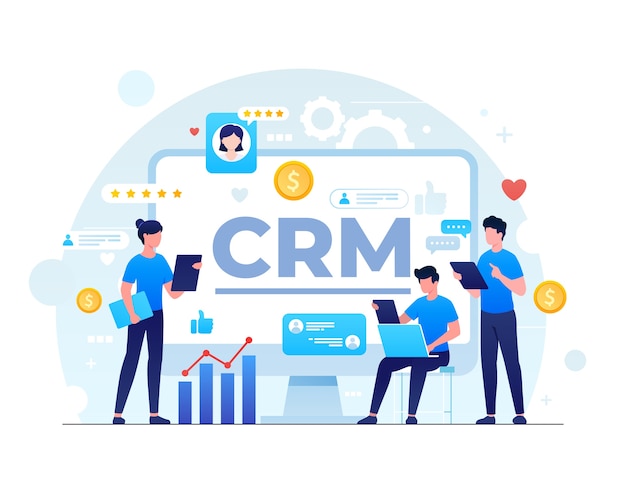
Table of Contents
- HubSpot CRM
- Salesforce CRM
- Zoho CRM
- Freshsales
- Pipedrive
HubSpot CRM
HubSpot CRM is a free cloud-based software that offers an all-in-one solution for small and medium-sized businesses. HubSpot's easy-to-use interface helps businesses to streamline their sales process by providing tools for tracking deals, managing customer data, and automating tasks. It also offers integrations with popular business applications like Gmail, Outlook, and Zapier.
Salesforce CRM
Salesforce CRM is a cloud-based CRM software that is designed for businesses of all sizes. It provides a complete solution for managing customer data, tracking interactions, and automating tasks. Salesforce also offers a range of advanced features like AI-powered sales forecasting, custom workflows, and advanced analytics. It also offers a variety of integrations with other business applications.
Zoho CRM
Zoho CRM is a cloud-based CRM software that is designed for small and medium-sized businesses. It offers an all-in-one solution for managing customer data, tracking interactions, and automating tasks. Zoho CRM also provides integrations with popular business applications like Gmail, Outlook, and Zapier. It also offers a range of advanced features like social media integration, marketing automation, and advanced analytics.
Freshsales
Freshsales is a cloud-based CRM software that is designed for businesses of all sizes. It offers a complete solution for managing customer data, tracking interactions, and automating tasks. Freshsales also offers a range of advanced features like AI-powered lead scoring, advanced analytics, and custom workflows. It also provides integrations with popular business applications like Gmail, Outlook, and Zapier.
Pipedrive
Pipedrive is a cloud-based CRM software that is designed for small and medium-sized businesses. It offers an easy-to-use interface for managing customer data, tracking interactions, and automating tasks. Pipedrive also offers a range of advanced features like advanced analytics, custom workflows, and integrations with popular business applications like Gmail, Outlook, and Zapier.

Conclusion
In conclusion, choosing the right CRM software for your business is a critical decision that can significantly impact your sales and marketing efforts. The five tools highlighted in this article - HubSpot CRM, Salesforce CRM, Zoho CRM, Freshsales, and Pipedrive - are among the best CMR solutions available in the market. By evaluating your business needs, you can select the best CRM software that will help you streamline your sales process, manage customer data, and improve your overall customer experience.

Chaitra Navratri is a Hindu festival that is celebrated for nine days during the Hindu month of Chaitra, which usually falls in March or April. This festival is celebrated with great enthusiasm and devotion by Hindus all over the world, and it marks the beginning of the Hindu New Year.
Navratri means 'nine nights' in Sanskrit, and during this festival, devotees worship the nine forms of the goddess Durga, also known as Navadurga. The nine forms of Durga are Shailaputri, Brahmacharini, Chandraghanta, Kushmanda, Skandamata, Katyayani, Kalaratri, Mahagauri, and Siddhidatri. Each form of Durga represents a particular attribute or quality and is worshipped accordingly.

The first day of Navratri is known as Ghatasthapana, which marks the beginning of the nine-day festival. On this day, a pot filled with water is placed in the puja room and decorated with mango leaves and a coconut. This post is considered to be a symbol of the goddess Durga, and it is worshiped throughout the nine days of the festival.

The first three days of Chaitra Navratri are dedicated to Goddess Durga, who is worshipped as the embodiment of power and energy. The next three days are dedicated to Goddess Lakshmi, the goddess of wealth and prosperity. The last three days are dedicated to Goddess Saraswati, the Goddess of knowledge and wisdom.
During Navratri, devotees observe fasts, perform pujas, and offer prayers to the goddess Durga. Many people also choose to refrain from consuming alcohol and non-vegetarian food during this period. It is believed that by observing these rituals, devotees can attain spiritual purification and can receive blessings from the goddess.
Apart from its religious significance, Chaitra Navratri also holds cultural and social importance. People decorate their houses with flowers and lights, and women wear new clothes and jewelry. Many communities organize Garba and Dandiya Raas dances during Navratri, where people dance to the beat of traditional music and celebrate the festival with great zeal and enthusiasm.
On the eighth day of Navratri, which is known as Ashtami, young girls are worshiped as embodiments of the goddess Durga. This day is also known as "Kanya Pujan," and it is believed that by worshiping young girls, one can receive the blessings of the goddess Durga.
On the ninth day of Chaitra Navratri, devotees worship the ninth form of Goddess Durga, known as Siddhidatri. The word "Siddhi" means "perfection" or "success," and "Datri" means "the giver." Goddess Siddhidatri is believed to be the ultimate giver of boons and blessings. She is also known as Adi Shakti, the original power or energy that created the universe.
The ninth and final day of Navratri is known as Navami, and it is considered to be the most important day of the festival. On this day, devotees offer prayers to the goddess Durga and seek her blessings. The festival culminates with the immersion of the pot, which is a symbol of the goddess Durga.
In conclusion, Chaitra Navratri is a festival that is celebrated with great devotion and enthusiasm by Hindus all over the world. It is a time to seek the blessings of the goddess Durga and to attain spiritual purification through fasting, prayer, and other rituals. This festival is a reminder of the power of the goddess, and of the importance of devotion and faith in our lives.

The key to a successful fitness journey lies in a combination of both exercise and nutrition. While it's important to put in the effort at the gym, it's equally important to fuel your body with the right nutrients to support your fitness goals. In this blog post, we will be discussing a 7-day gym diet plan that will help you stay on track with your fitness goals.

Day 1:
On the first day of your gym diet plan, it's important to start your day with a healthy breakfast that will provide you with the energy you need for your workout. A good option is an oatmeal with some fresh fruit and a scoop of protein powder. For lunch, try a salad with some grilled chicken or fish and some healthy fats like avocado or nuts. For dinner, aim for a protein-rich meal like grilled chicken or salmon with some steamed vegetables.
Day 2:
For day 2 of your gym diet plan, start your day with a protein-packed breakfast like scrambled eggs with spinach and some whole-grain toast. For lunch, opt for a turkey or chicken sandwich on whole-grain bread with some veggies on the side. For dinner, try a stir-fry with some lean protein like shrimp or tofu, lots of veggies, and some brown rice.
Day 3:
On day 3, start your day with a protein shake made with protein powder, almond milk, and some frozen berries. For lunch, try a wrap with some grilled chicken or turkey, lots of veggies, and some hummus for added flavor. For dinner, aim for a protein-rich meal like grilled steak or pork chops with some roasted sweet potatoes and steamed veggies.
Day 4:
For day 4, start your day with some Greek yogurt topped with some fresh fruit and granola. For lunch, try a veggie burger on a whole-grain bun with some sweet potato fries on the side. For dinner, opt for a healthy pasta dish like whole-grain pasta with some grilled chicken, lots of veggies, and a tomato-based sauce.
Day 5:
On day 5, start your day with a breakfast burrito made with scrambled eggs, black beans, veggies, and some whole-grain tortillas. For lunch, try a spinach and quinoa salad with some grilled chicken or tofu and some nuts for added crunch. For dinner, try a grilled fish like salmon with some roasted veggies and quinoa on the side.
Day 6:
For day 6, start your day with a smoothie made with protein powder, almond milk, and some frozen fruit. For lunch, try a chicken or turkey wrap with some veggies and avocado on a whole-grain wrap. For dinner, try a lean protein like grilled chicken or fish with some roasted veggies and brown rice.
Day 7:
On the final day of your gym diet plan, start your day with a protein-packed breakfast like a spinach and feta omelet with some whole-grain toast on the side. For lunch, try a tuna salad on a bed of greens with some whole-grain crackers on the side. For dinner, aim for a lean protein like grilled shrimp or chicken with some roasted veggies and sweet potato on the side.

Conclusion:
By following this 7-day gym diet plan, you will be able to fuel your body with the right nutrients to support your fitness goals. Remember to also stay hydrated by drinking plenty of water throughout the day and snacking on healthy options like fruits, nuts, and veggies. With a combination of exercise and nutrition, you will be well on your way to achieving your fitness goals.

In today's digital age, having an online presence is crucial for businesses to stay competitive. With millions of websites out there, it's not enough to simply have a website. To stand out and get noticed online, businesses need to ensure their website is optimized for search engines.
Search Engine Optimization (SEO) is the practice of optimizing your website to increase its visibility and rank higher in search engine results pages (SERPs). Effective SEO copywriting is a critical part of this process.
SEO copywriting involves creating content that is optimized for search engines while also being engaging and informative for the reader. Here are some tips for effective SEO copywriting that will help your website get noticed online:
1. Conduct Keyword Research
Keyword research is the foundation of effective SEO copywriting. You need to know what your target audience is searching for and what keywords they are using to find information. Use keyword research tools to find relevant keywords and include them in your content.
2. Use Relevant and Engaging Headlines
Headlines are the first thing that people see when they land on your website. Use headlines that are relevant to the content and engaging enough to grab the reader's attention. Use keywords in your headlines to make them more search engine-friendly.
3. Write Quality Content
Quality content is the backbone of effective SEO copywriting. Write content that is informative, engaging, and adds value to the reader. Use subheadings, bullet points, and images to make your content easier to read and understand.
4. Use Meta Descriptions
Meta descriptions are the brief descriptions that appear in the search engine results pages under the headline. Use relevant keywords and write a concise description that accurately describes the content on your page.
5. Optimize Images
Images are an essential part of any website, but they can also slow down your website if they are not optimized. Use compressed images and add relevant alt tags to make them more search engine-friendly.
6. Build Quality Backlinks
Backlinks are links from other websites that link back to your website. Quality backlinks are an essential part of SEO and can help improve your website's search engine ranking. Build quality backlinks by creating engaging and informative content that other websites will want to link to.
7. Focus on User Experience
User experience is becoming increasingly important in SEO. Google is placing more emphasis on user experience metrics such as page speed, mobile responsiveness, and user engagement. Ensure that your website is optimized for a positive user experience by optimizing page speed, ensuring mobile responsiveness, and creating engaging content that keeps users on your website longer.
8. Use Internal Linking
Internal linking is the practice of linking to other pages within your website. This helps search engines understand the structure of your website and can improve your website's search engine ranking. Use internal linking to help guide users through your website and to help search engines understand the content on your website.
9. Monitor and Analyze Your Performance
Monitoring and analyzing your website's performance is critical to SEO success. Use tools like Google Analytics to track your website's traffic, bounce rate, and other important metrics. Use this information to make adjustments and improvements to your website and content to improve your website's search engine ranking.
10. Stay Up-to-Date with SEO Trends
SEO is constantly evolving, so it's important to stay up-to-date with the latest trends and best practices. Subscribe to SEO blogs and forums, attend SEO conferences, and stay informed on the latest algorithm updates from search engines like Google. By staying up-to-date, you can ensure that your website stays relevant and competitive in the ever-changing world of SEO.
11. Write for Your Audience
While it's important to optimize your content for search engines, it's equally important to write for your audience. Your content should be informative, engaging, and useful for your target audience. By providing valuable content, you can increase user engagement and keep visitors on your website longer.
12. Use Social Media to Promote Your Content
Social media can be a powerful tool for promoting your content and driving traffic to your website. Share your content on social media platforms like Facebook, Twitter, LinkedIn, and Instagram to increase its reach and visibility. Encourage your followers to share your content to help increase its exposure.
13. Use Calls-to-Action (CTAs)Use Calls-to-Action (CTAs)
Calls-to-Action (CTAs) are prompts that encourage users to take a specific action, such as signing up for a newsletter, downloading an ebook, or making a purchase. Use CTAs throughout your website and content to guide users through your website and encourage them to take the next step.
14. Use Local SEO
If your business has a physical location, local SEO is critical to your success. Local SEO involves optimizing your website and content for location-specific keywords and phrases. This can help improve your website's search engine ranking for local search queries and drive more foot traffic to your business.
15. Be Patient
SEO is a long-term strategy, and it takes time to see results. Be patient and continue to create quality content that is optimized for search engines. Over time, your website will begin to rank higher in search engine results pages, and you will begin to see an increase in traffic and engagement.
16. Use Schema Markup
Schema markup is a type of code that you can add to your website to help search engines understand the content on your website. It can help improve your website's search engine ranking and increase visibility in search engine results pages. Use schema markup to provide additional information about your content, such as reviews, ratings, and product information.
17. Optimize Your Images
Images can help make your content more engaging and appealing to your audience, but they can also slow down your website's loading speed if they are not optimized properly. Use image compression tools to reduce file size and ensure that your images are properly formatted for the web. Add alt text to your images to help search engines understand the content of your images.
18. Use Long-Tail Keywords
Long-tail keywords are longer and more specific keyword phrases that users use when searching for specific products or services. By using long-tail keywords in your content, you can increase your chances of ranking for specific search queries and improve your website's search engine ranking.
19. Build Quality Backlinks
Backlinks are links from other websites to your website. They can help improve your website's search engine ranking and increase visibility in search engine results pages. Focus on building quality backlinks from authoritative websites in your industry. Avoid spammy or low-quality backlinks, as these can harm your website's search engine ranking.
20. Continuously Improve Your Content
Finally, to be successful in SEO, it's important to continuously improve your content. Use tools like Google Search Console to monitor your website's search engine ranking and identify opportunities for improvement. Update and optimize your existing content to keep it relevant and engaging for your audience. Create new content that is optimized for search engines and provides value to your audience.
21. Hire a Professional SEO Copywriter
If you're struggling to create effective SEO content, consider hiring a professional SEO copywriter. A professional SEO copywriter can help you create high-quality, optimized content that is designed to improve your website's search engine ranking and engage your target audience
By following these tips, you can create an effective SEO copywriting strategy that helps your website get noticed online. Remember to focus on user experience, write for your audience, use social media to promote your content, and continuously improve your content to stay competitive in the ever-changing world of SEO.







